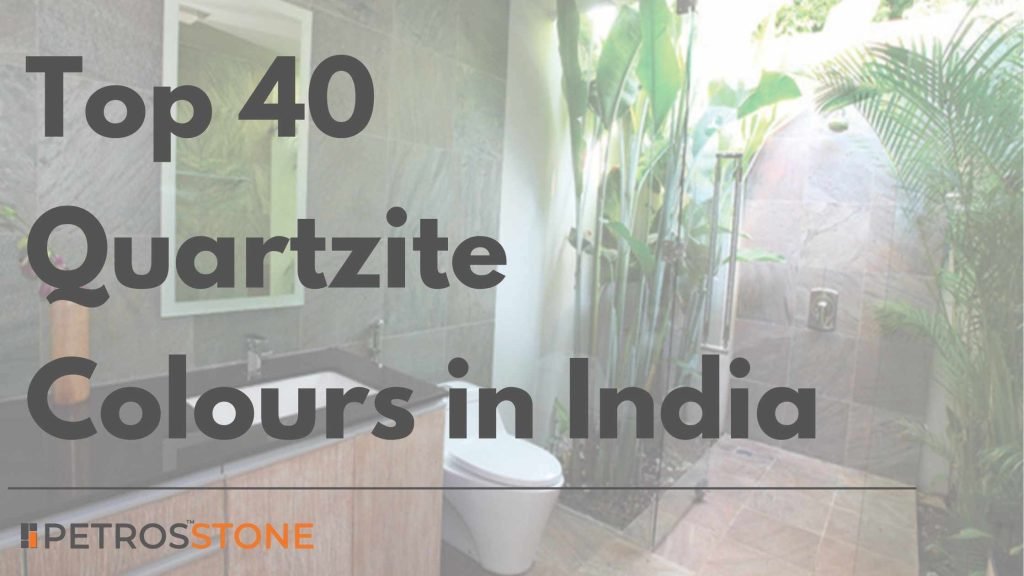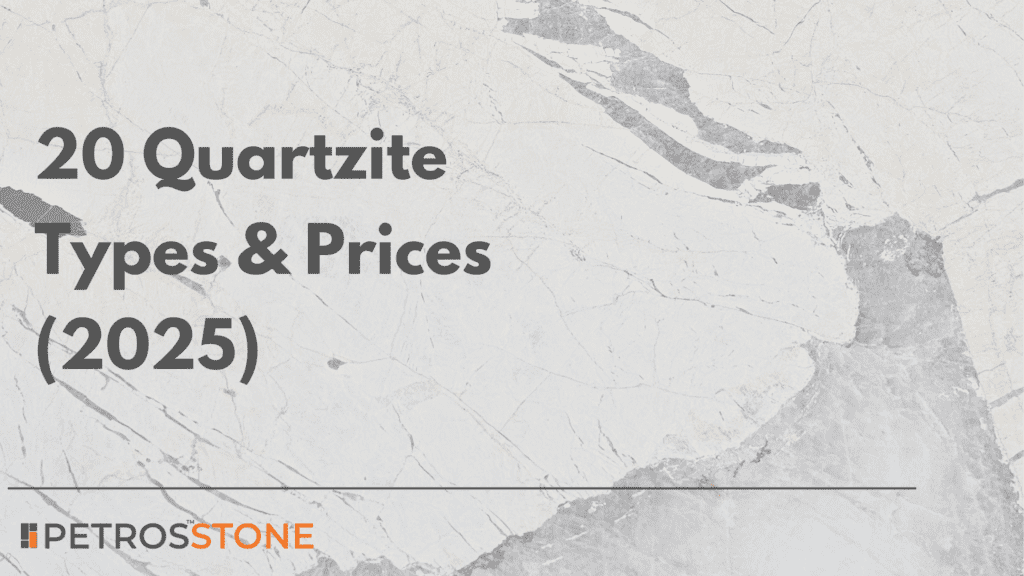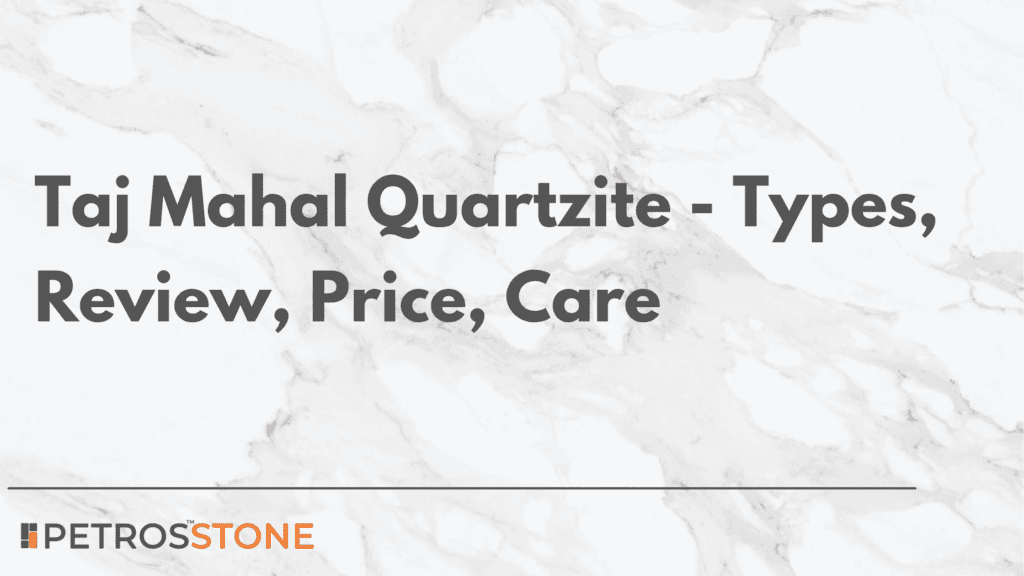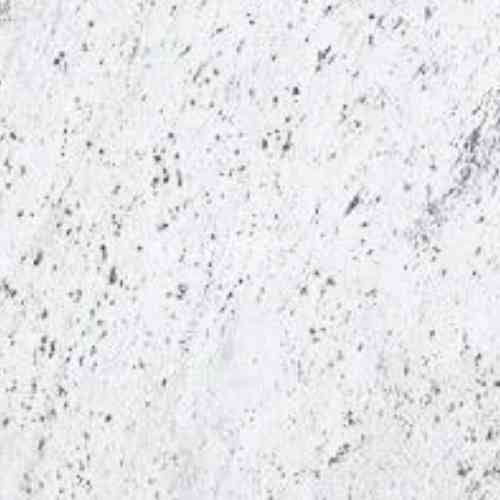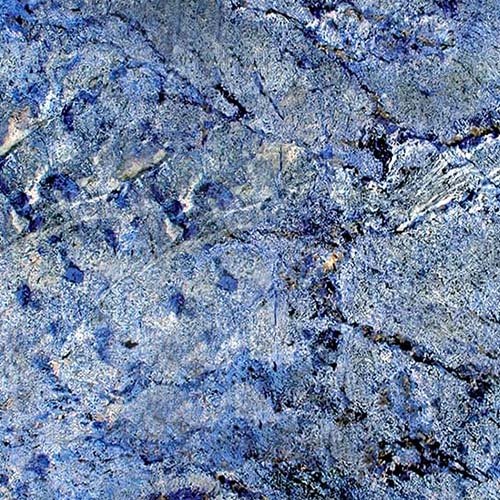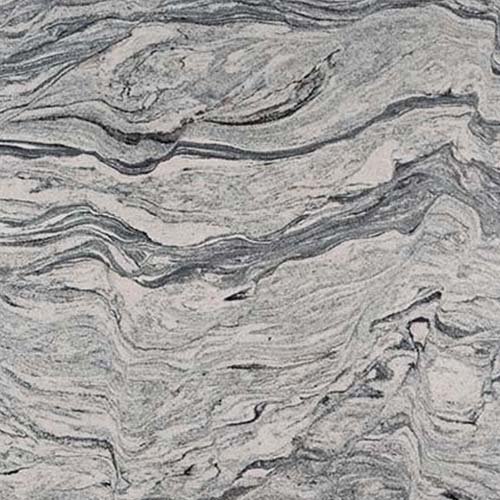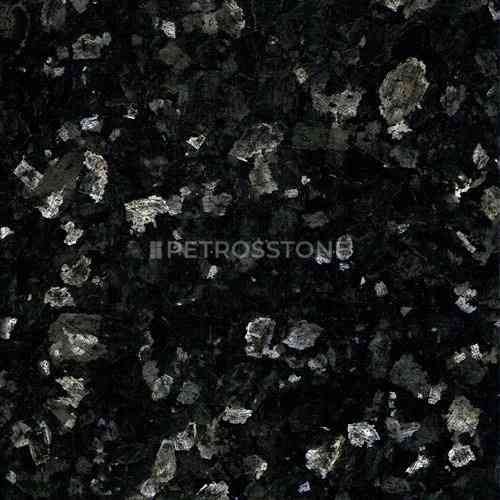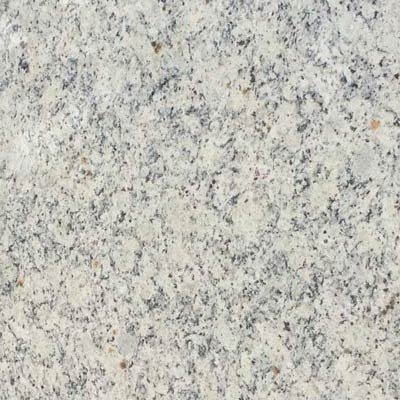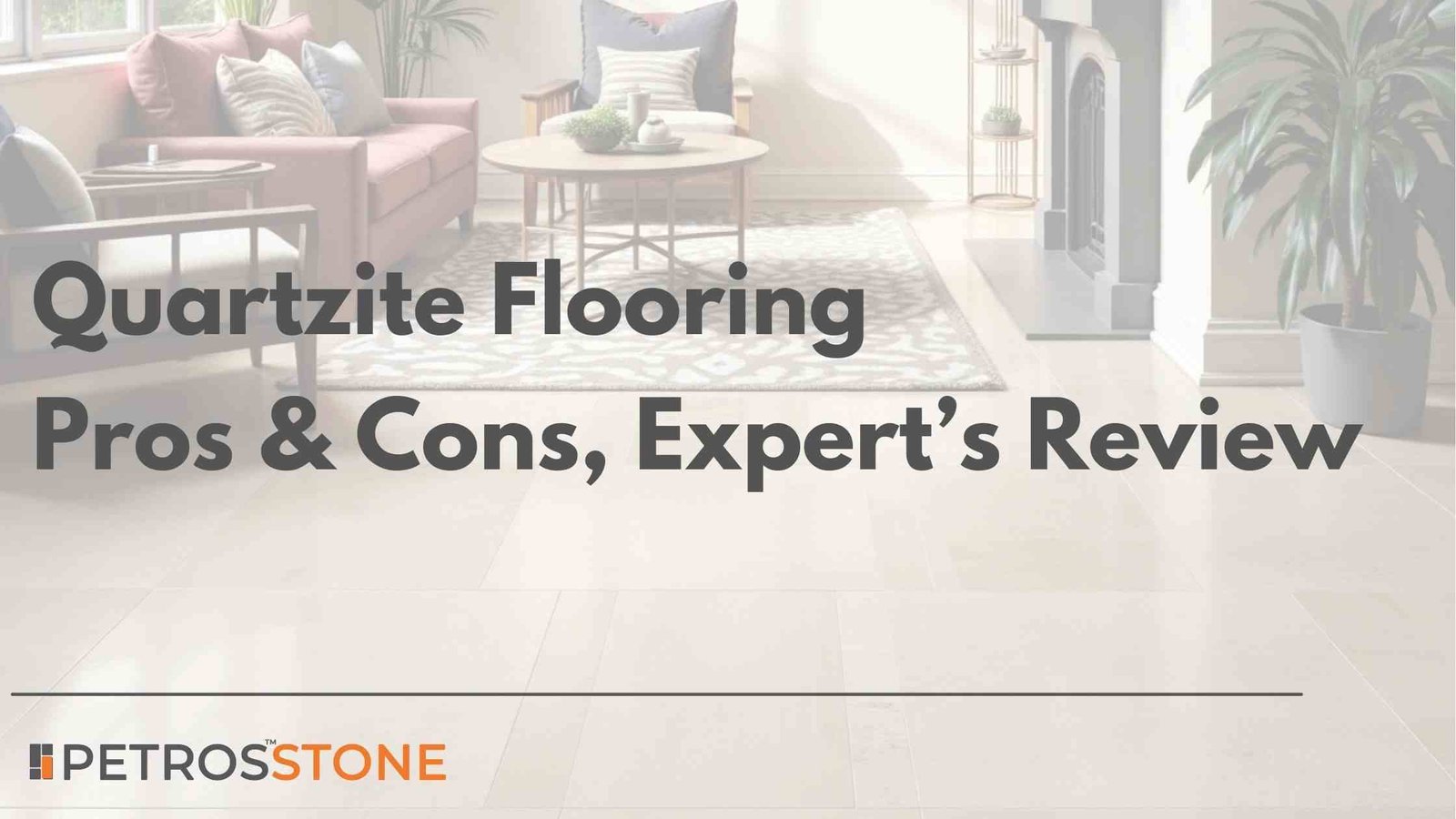
Flooring is more than just a walking surface, it shapes the atmosphere of your entire space. The right floor must be stable, visually appealing, and easy to maintain. While many admire the elegance of marble, they worry about staining and scratching. Porcelain tiles offer practicality and ease, but often lack the natural character of real stone.
Quartzite flooring strikes the perfect balance. It delivers the high-end appearance of marble and the toughness of granite, making it both luxurious and durable.
Pros & Cons of Quartzite Flooring – A Comparative Table
| Aspect | Pros | Cons |
|---|---|---|
| Durability | Extremely hard; resists wear and pressure | Costly material and installation |
| Scratch Resistance | Excellent, even with pets and heavy use | Edges may chip under strong impact |
| Heat & UV Resistance | Handles hot pans and sunlight with ease | Requires proper finish for outdoor grip |
| Visual Appeal | Unique natural veining; luxurious marble-like look | Limited bold colors; rare types are expensive |
| Maintenance | Less etching/staining than marble; easy cleaning | Needs sealing every 12–24 months |
| Outdoor Use | Great for patios/pools with textured finish | Slippery if polished and wet |
| Cost | Long-term value; premium appeal | High upfront material and labor cost |
| Installation | Seamless large formats possible | Heavy stone; expert cutting and leveling required |
| Color Range | Elegant neutral tones work in many styles | Limited availability of greens, blues, and blacks |
| Slipperiness | Safer with honed/leathered finishes | Polished finishes can be risky in wet areas |
| Sealing Needs | Sealed quartzite resists most stains | Needs resealing annually or biannually |
| Comfort | Cool underfoot in warm climates | Feels cold in winter unless heated |
In this article, we offer detailed information about quartzite flooring, its pros, cons, cost, variants, coating, proper care, and professional assessment, and whether it is the correct flooring to install in your home or business premises or not.
- What is Quartzite?
- Why Use Quartzite for Flooring?
- Pros of Quartzite Flooring
- Cons of Quartzite Flooring
- Common Problems Faced with Quartzite Flooring
- Quartzite vs Quartzite-Looking Tiles
- 10 Best Quartzite Varieties for Flooring
- Best Surface Finishes for Quartzite Flooring
- Expert Tips for Buying and Installing Quartzite Flooring
- Maintenance & Care Guide for Quartzite Flooring
- Expert’s Final Review & Verdict
- FAQs
- Summary
- Key Takeaways
What is Quartzite?
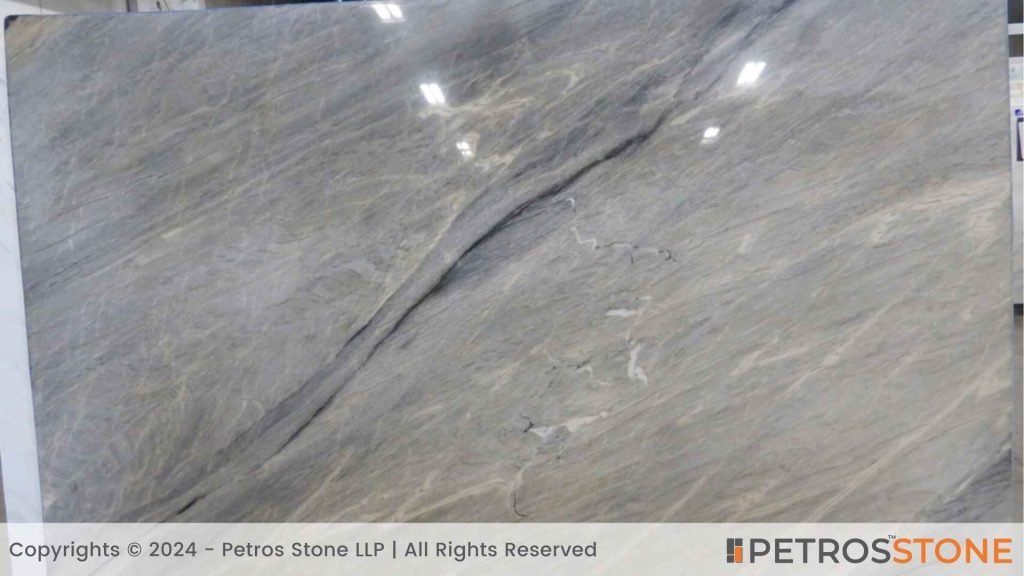
Quartzite is a natural metamorphic rock. It starts as a sandstone that is high in quartz. Heat and pressure combine the grains of quartz into a dense and hard rock over millions of years. Quartzite is usually rated at about 7 out of 10 on the Mohs hardness scale (which is 1-10 based on how easily a material can be scratched), harder than most building materials, and much harder than marble.
It tends to be soft cream, white, and gray with fine or coarse veining. There are rare forms with green, blue, or golden hues.
Reasons why quartzite is becoming so popular in flooring:
- High strength for busy homes and commercial spaces.
- Ultraviolet looks that compete with high-end marble.
- Better scratch and heat resistance than marble.
- Appropriate both indoors and outdoors with an appropriate finish.
- An extended lifespan enhances the general value of money.
Why Use Quartzite for Flooring?
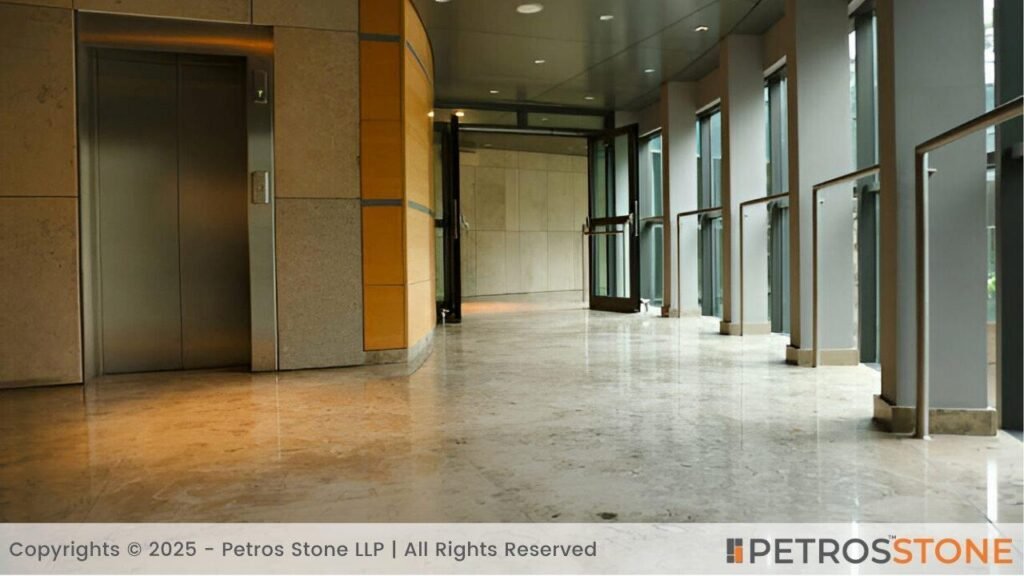
Quartzite is characterized by beauty, strength, and utility. Should you like the grace of marble and the permanence of granite, quartzite is a solid option. Unlike most stones, it can withstand foot traffic, pets, children, kitchen accidents, and sunlight.
Where quartzite shines:
- Traffic-prone entries and corridors.
- Living rooms where you desire the feel of luxury.
- Hot, wet kitchens.
- Bathrooms(with the right, less-slippery finish).
- Patios and pool decks (textured).
Table – At-a-Glance Comparison
| Feature/Need | Quartzite | Marble | Granite | Porcelain Tile | Luxury Vinyl |
| Overall durability | Excellent (very hard) | Moderate (softer) | Very good | Very good | Good |
| Scratch resistance | Excellent | Fair | Very good | Good | Fair |
| Heat/UV resistance | Excellent | Fair | Very good | Very good | Fair |
| Looks & natural variation | High | Very high | High | Medium (printed) | Low–Medium (printed) |
| Maintenance | Moderate (seal) | Higher (etch/stain) | Moderate (seal) | Low | Low |
| Outdoor suitability | Yes (textured) | Limited | Yes | Yes | No |
| Cost level | High | High | Medium–High | Low–Medium | Low |
Pros of Quartzite Flooring
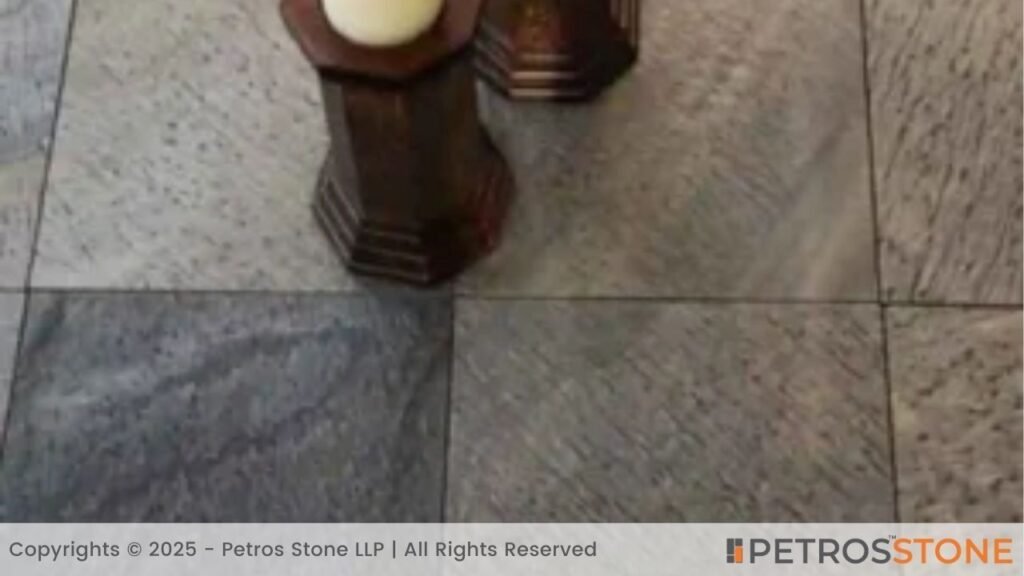
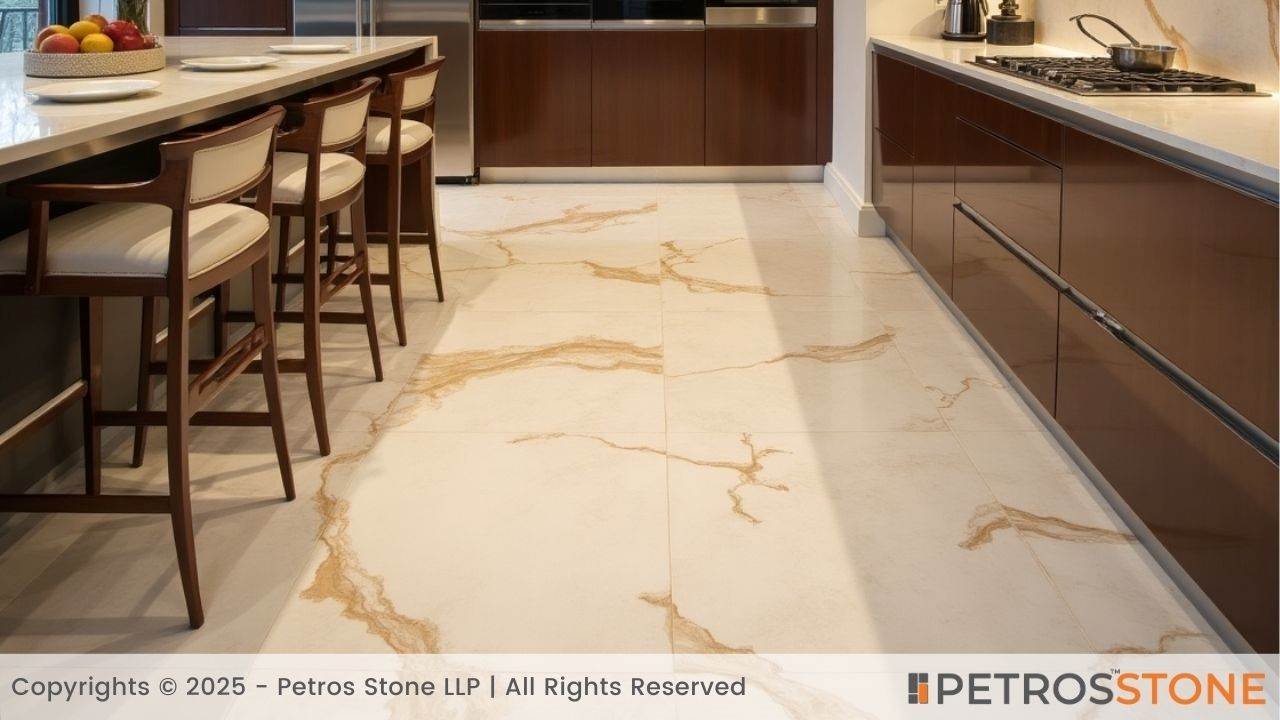
Durability & Longevity
Quartzite is very hard. It is immune to the scratches of everyday use, is stable under the weight of a chair leg, dirty footwear, and can handle dropped objects (within limits). Properly installed and regularly sealed, quartzite flooring can endure decades- often longer than synthetic flooring. It is also less dense and, as such, less likely to take up spills after it is sealed, so that it appears newer than it really is.
Durability highlights:
- High hardness = less surface wear.
- Good compressive strength = stable under load.
- Thermal stability = manages temperature variations.
Aesthetic Appeal (Colors, Veining, Texture)
Quartzite has a natural and graceful appearance with a personal style. There are no two identical-looking floors that will give it an air of quality. You can just go simple with the whites and greys or get aggressive with the green and patterned slabs to feature a space. Some quartzites have subtle mica that provides a slight sparkle in the sunshine.
Design benefits:
- Special patterns of veining on exclusive floors.
- Works with modern, classic, rustic, or coastal styles.
- Coordinates with wood, metal, concrete, warm or cool palettes.
Scratch and Heat Resistance
Quartzite is hard and can withstand heat, and it comes in handy in kitchens and in sunny rooms. It will not burn under hot pots that are left on the floor (not recommended at all), and it does not fade so readily in the sun. In the case of pets, quartzite can resist the paw scratches of most pets compared to other surfaces.
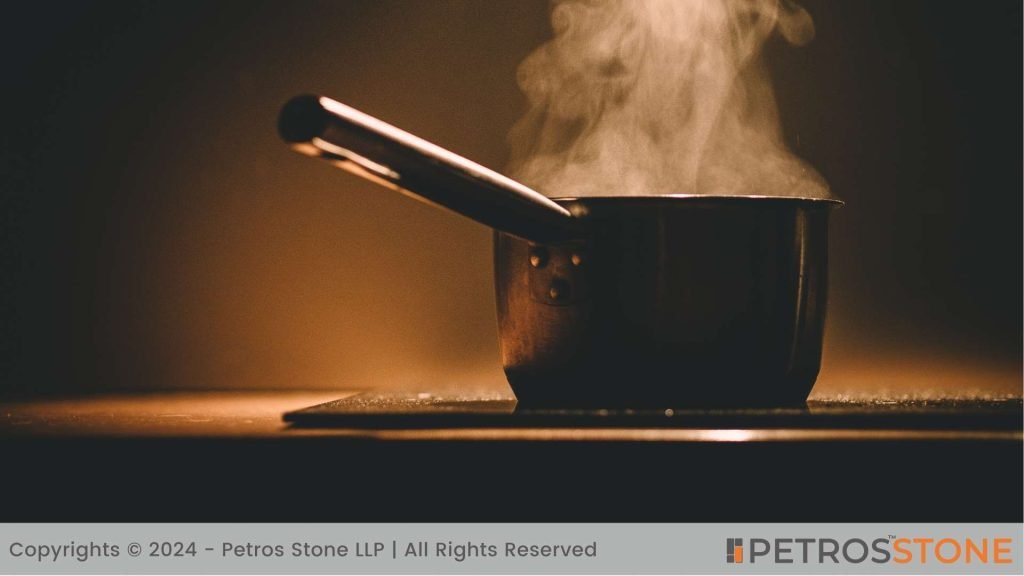
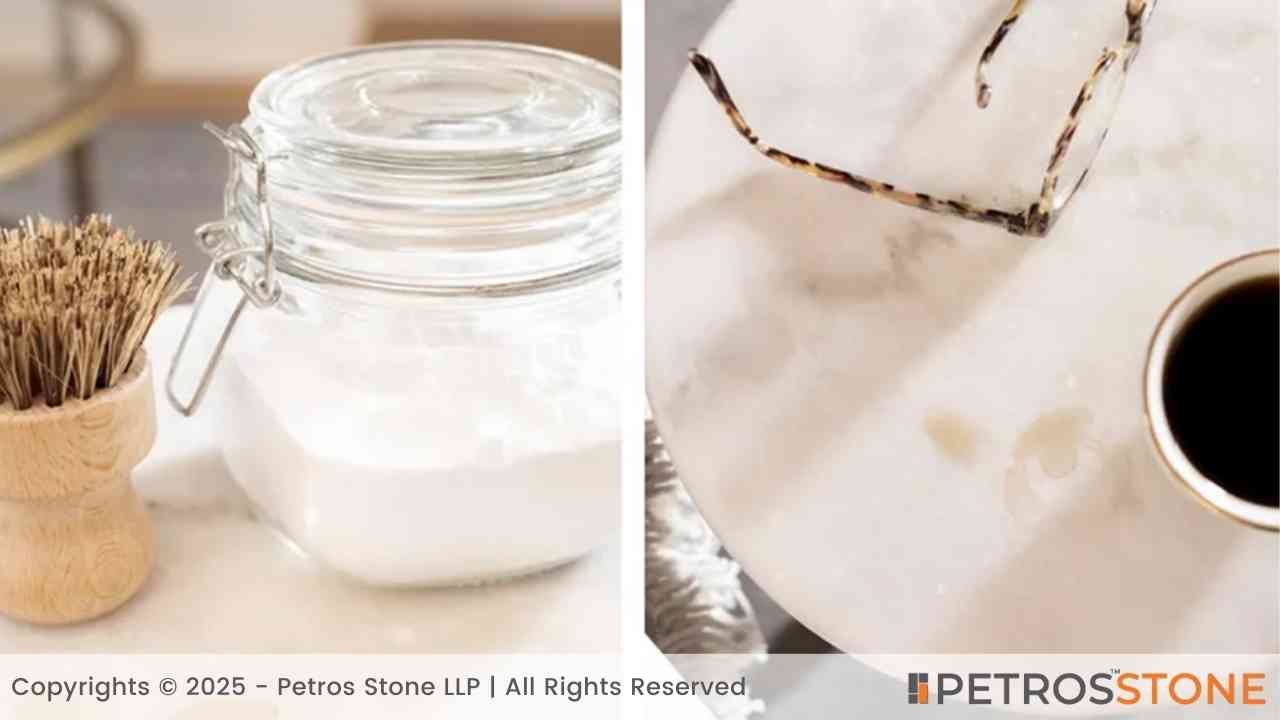
Low Maintenance Compared to Marble
Quartzite is forgiving compared to marble. Quartzite does not usually etch with weak acids, such as marble does, although you ought to seal it to prevent staining. Cleaning is simple, day by day: pH-neutral cleaner, or mild soap in warm water, microfiber mop, and your tasks are complete.
Versatility in Applications (Indoor/Outdoor/Kitchens/Bathrooms)
Not many materials look equally at home in a living room and a pool deck. Quartzite will–unless you choose the finish. Smooth to interior, polished to bathroom, and leathered or textured to exterior. This adaptability assists you in taking a single material across numerous areas to one unified design.
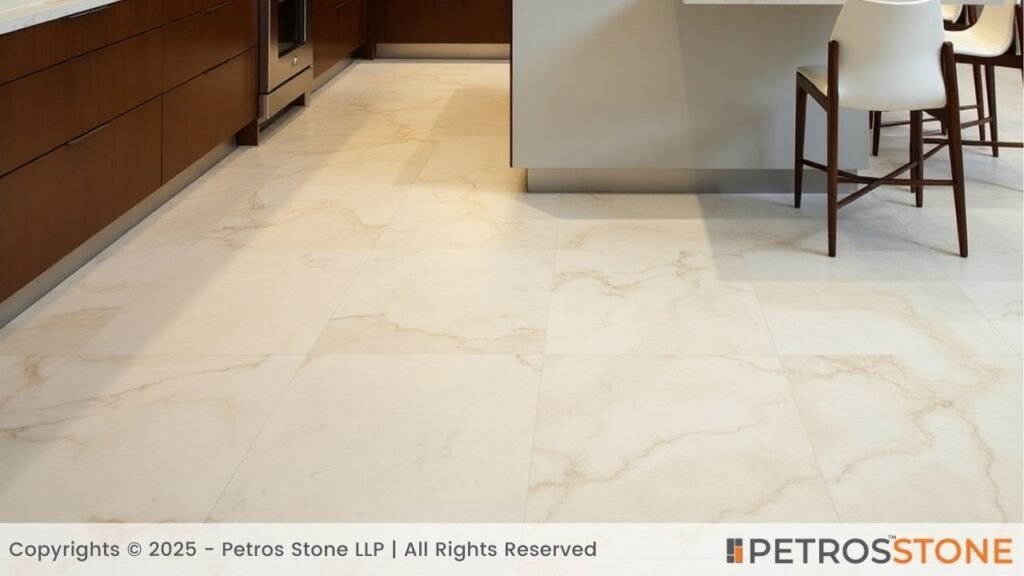
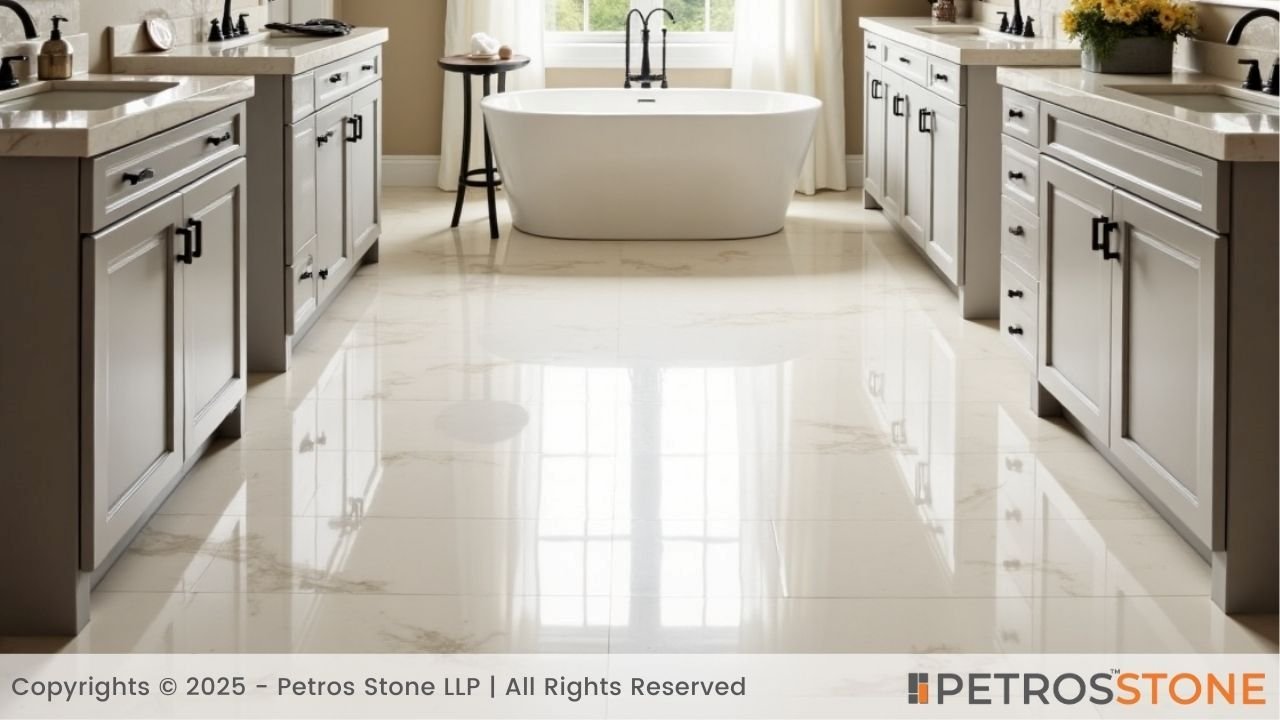
Adds Value to Property
Buyers recognize natural stone as a high-quality upgrade. Since quartzite is durable and retains its appearance, it can make a resale. It is also commonly perceived by appraisers and buyers as comparable to other luxury materials, even more preferable than marble in busy homes.
Table – Pros Summary Table
| Benefit | Why it matters | Where you feel it most |
| Very high hardness | Less scratching and wear | Kitchens, hallways |
| Heat & UV resistance | Withstands sun and warm items | Sunrooms, near windows |
| Natural beauty | Premium, unique look | Living areas, entryways |
| Maintenance (vs marble) | Fewer stains/etches when sealed | Kitchens, baths |
| Indoor/outdoor use | One material across zones | Patios, pool areas |
| Value retention | Long life, strong resale signal | Whole property |
Cons of Quartzite Flooring
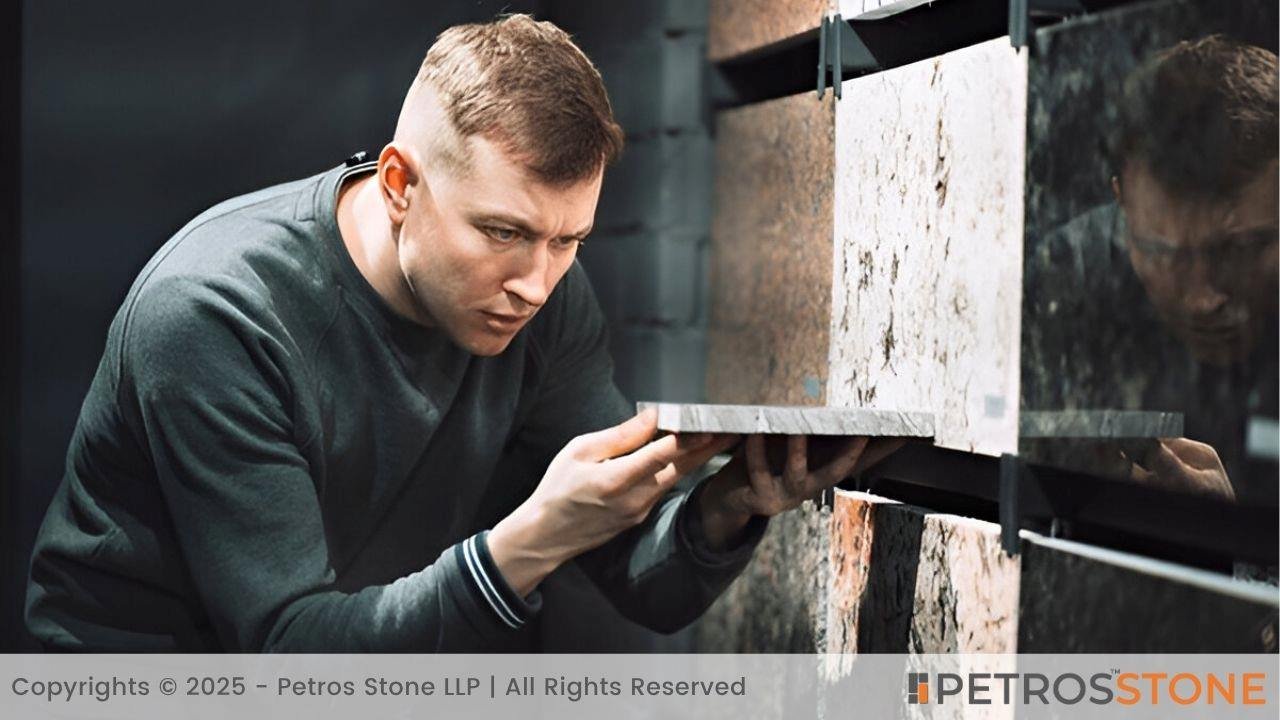
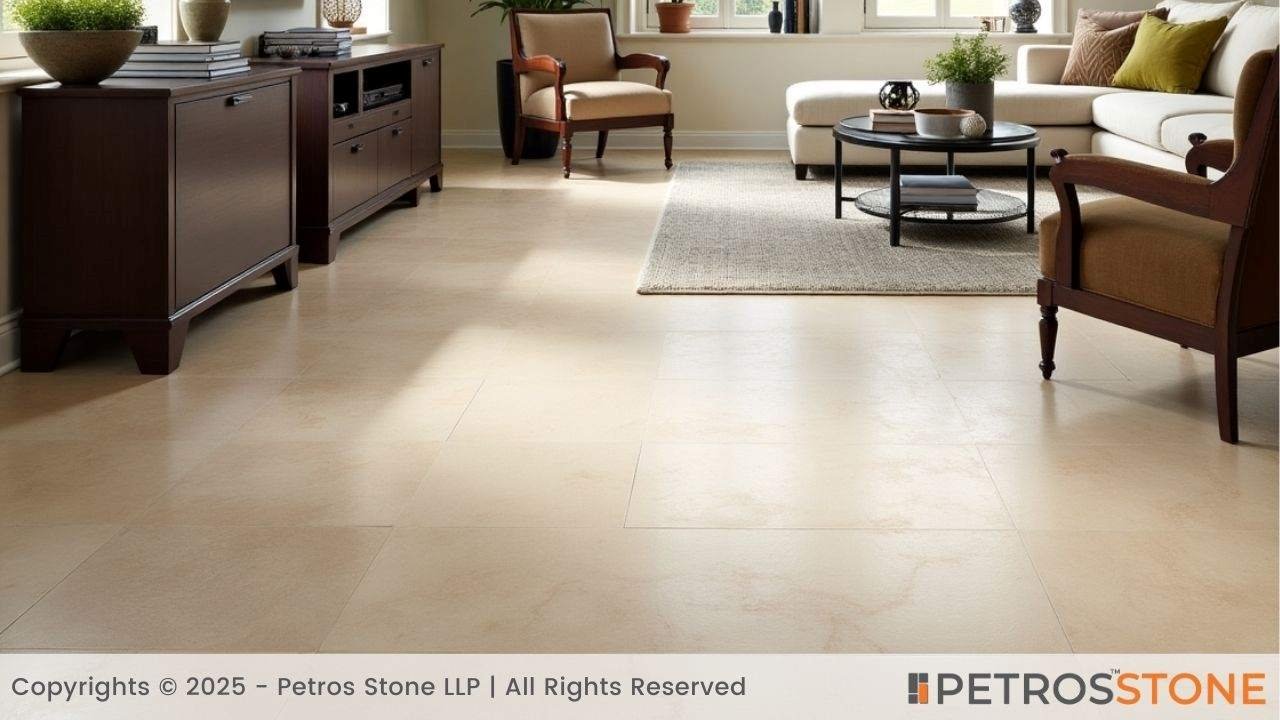
Higher Cost Compared to Alternatives
Quartzite is not a cheap option. The cost of materials is expensive, and qualified installation increases the price. Exotic varieties and large, book-matched slabs cost even more.
Installation Challenges (Weight, Cutting Difficulty)
The density of quartzite is heavy. It is also very slow to cut, and it needs diamond tools and expert installers. When your space requires a lot of detailed cuts or complex patterns, labour time and cost will be greater.
Limited Color Range
Patterns may be dramatic, but the palette of most quartzites is biased towards whites, greys, beige, and soft neutrals. There are other bolder versions of green, blue, and black, which are more expensive and hard to find.
Requires Sealing & Maintenance
Quartzite remains a porous natural stone. Sealing minimizes absorption and assists in preventing stains, yet it does not make it a set-it-and-forget-it. Re-sealing every 12-24 months will be required based on use and product.
Can Be Slippery (Polished Finish)
Polished quartzite is mirrored and polished, and can be slippery when wet, particularly with soaps or oils. Bathrooms, kitchens, and entries can be safer using a honed or leathered finish, or an anti-slip finish.
Cold Underfoot
Similar to marble and granite, quartzite is cold to the touch. It is cool during hot weather, whereas it is not very nice in cold climates unless you use it in combination with carpets or warm floors.
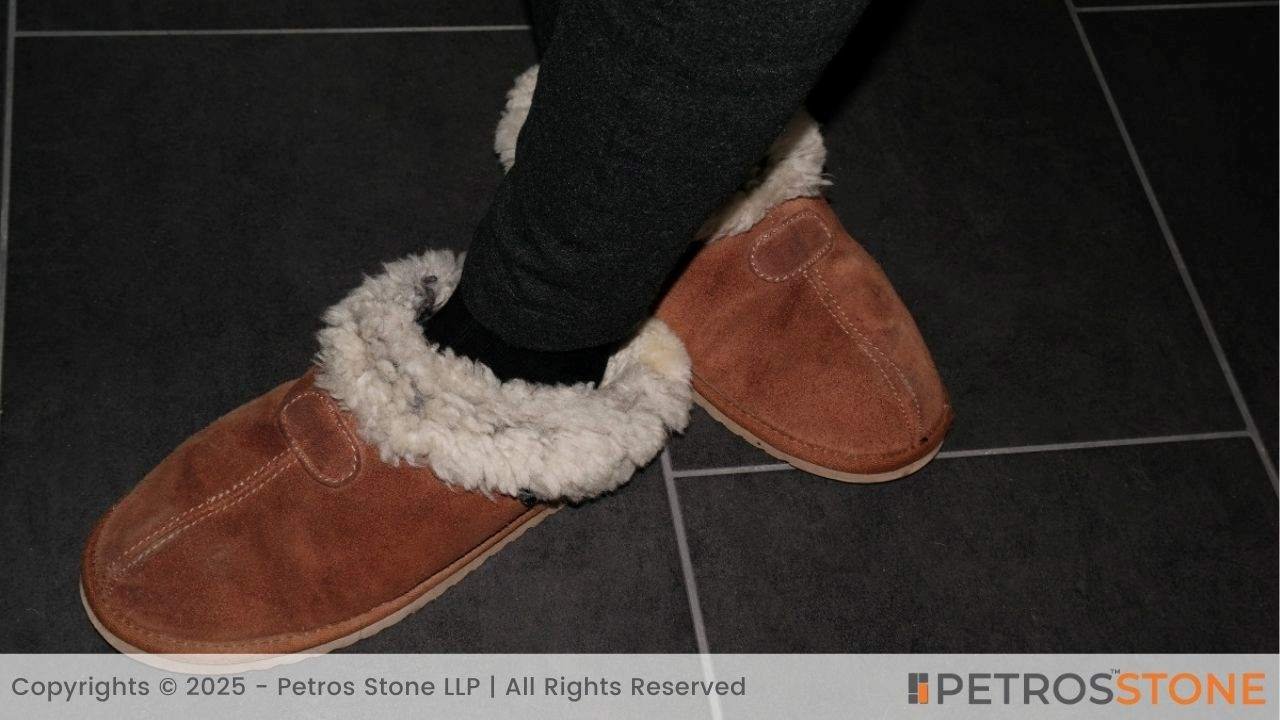
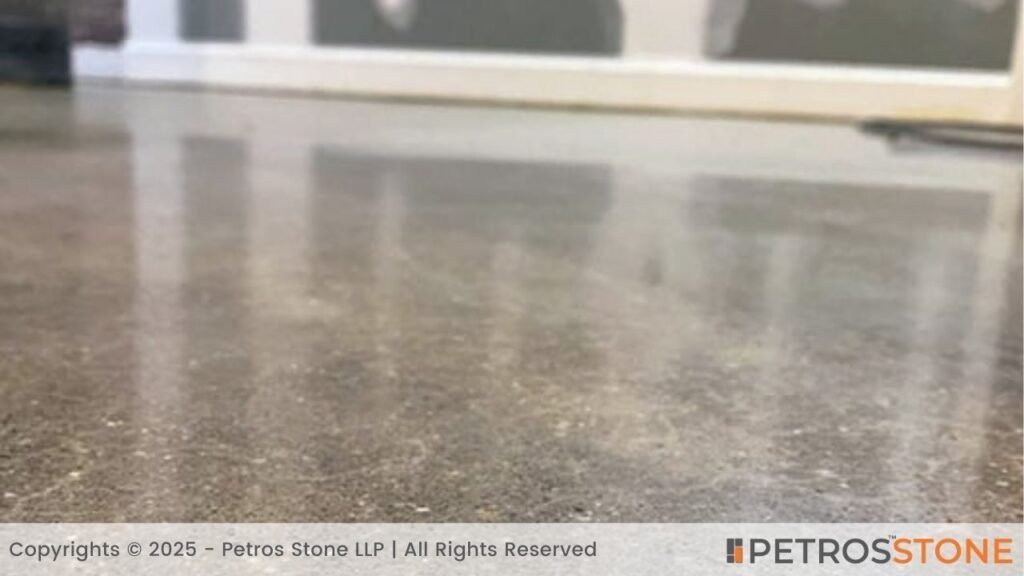
Table – Cons Summary Table
| Drawback | Practical impact | Typical workaround |
| Higher material cost | Raises project budget | Use smaller areas, mix with other floors |
| Skilled installation | Limited installer options | Vet contractors, plan lead time |
| Narrower color base | Fewer bold colors | Accent with rugs/paint/furniture |
| Needs sealing | Light ongoing maintenance | Annual or biannual reseal |
| Slippery when polished | Safety risk when wet | Choose honed/leathered; add mats |
| Cool feel | Cold in winters | Rugs, underfloor heating |
Common Problems Faced with Quartzite Flooring
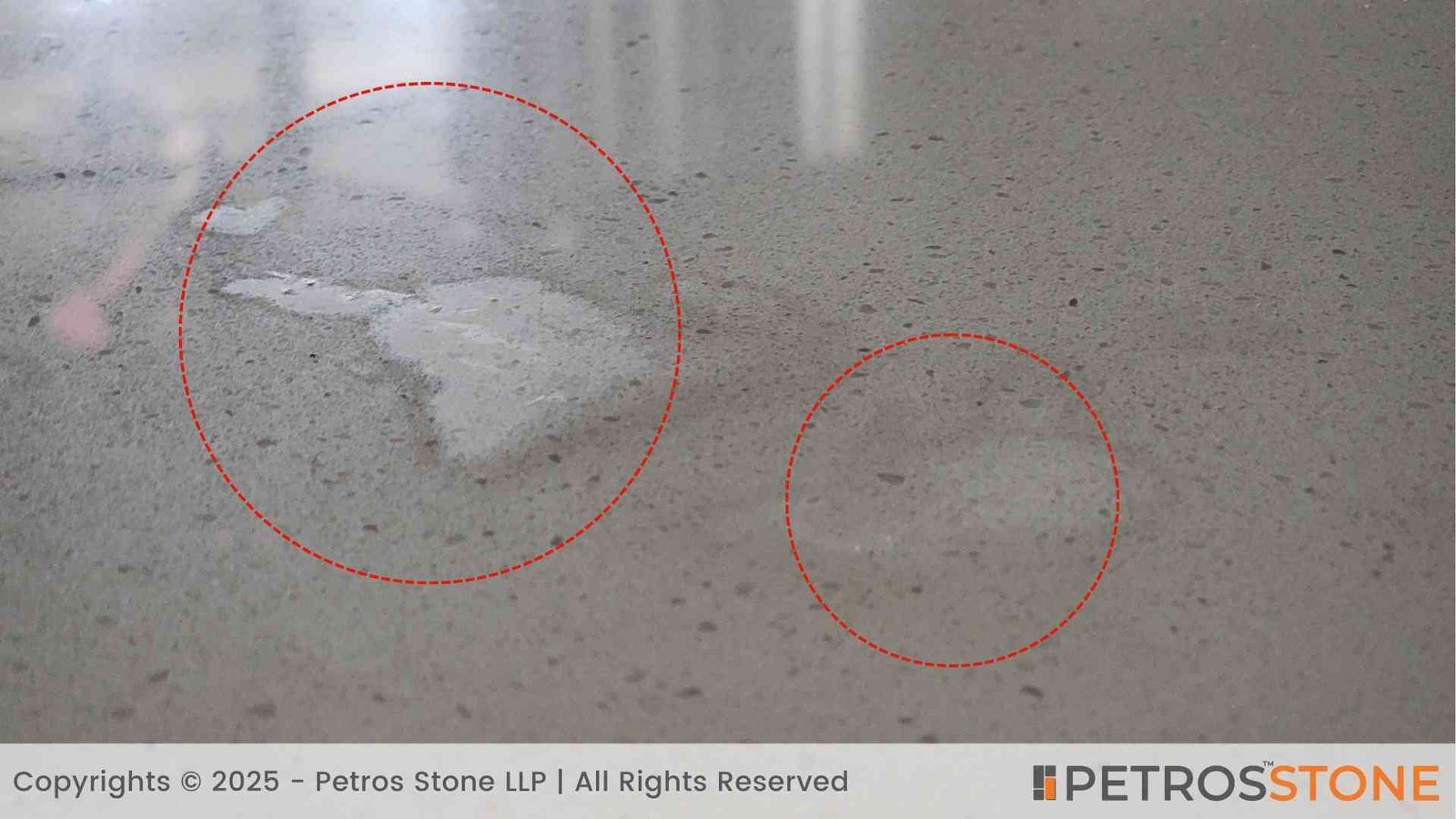

Even good material may give headaches when details are overlooked. These are the problems that owners encounter occasionally and how to avoid or correct them.
| Problem | Likely cause | Prevention | Fix |
| Staining (coffee, wine, oil) | Inadequate or expired sealer | Seal on install; re-seal 12–24 months | Deep clean; poultice; re-seal |
| Slippery spots | Polished finish + water/soaps | Use honed/leathered in wet zones | Anti-slip treatment; mats |
| Chipped edges/corners | Heavy impact on tile edge | Use thicker tiles; soft pads under furniture | Professional repair; replace piece |
| Lippage (uneven tile edges) | Poor substrate prep or leveling | Flat substrate; experienced installer | Re-set affected tiles if severe |
| Haze after sealing | Over-application or wrong product | Follow manufacturer coverage; test first | Strip sealer; re-apply correctly |
| White water marks | Water trapped under sealer | Allow full dry time before sealing | Let dry; strip/reseal |
| Mislabelled stone (marble sold as quartzite) | Supplier error or misidentification | Buy from reputable vendors; request tests | Treat as marble if that’s what it is; reconsider placement |
Tip: Ask your supplier to carry out a simple scratch test (a knife cannot easily scratch true quartzite) and a lemon juice test (a drop cannot easily etch on proper quartzite). Such little checks prevent misidentified slabs.
Quartzite vs Quartzite-Looking Tiles
What are Quartzite-Looking Tiles?
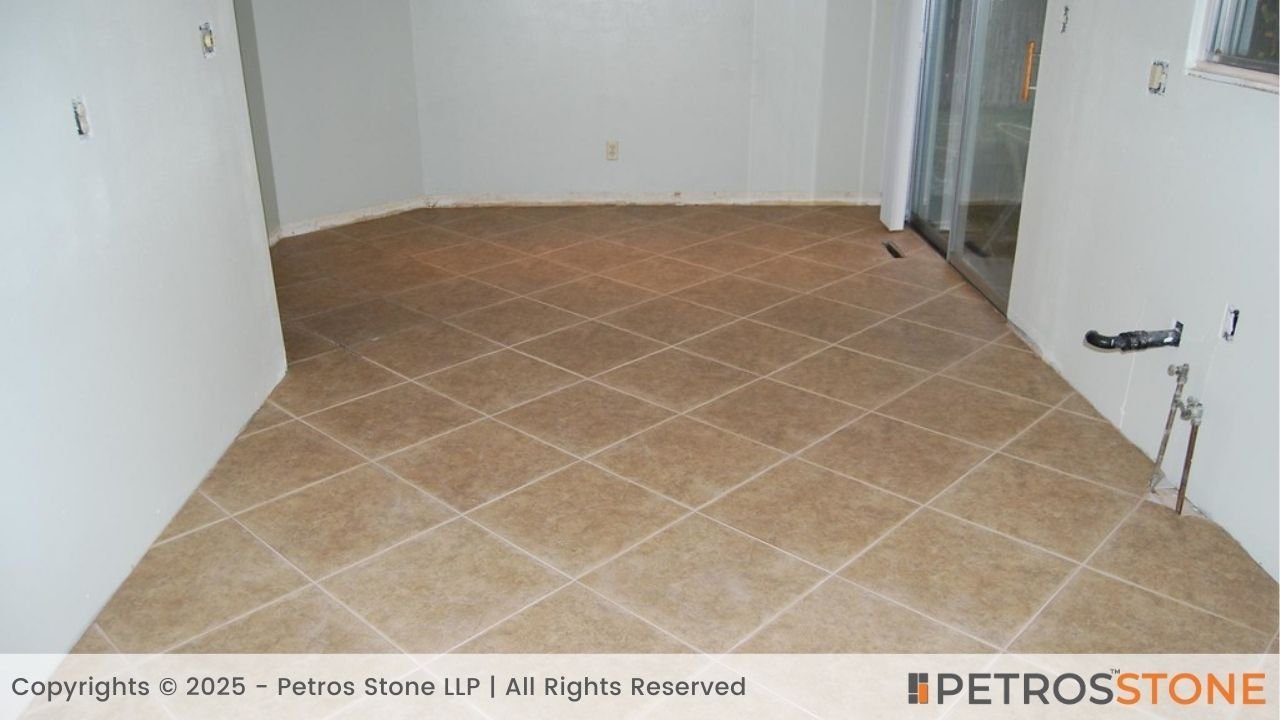
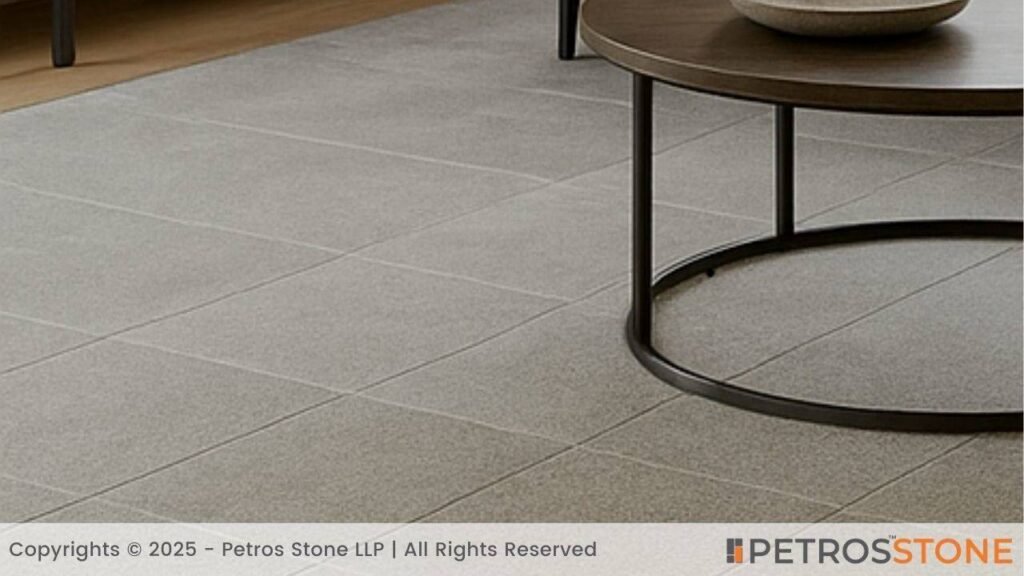
They are porcelain or ceramic tiles that are printed with high-resolution images to appear as quartzite. They vary in quality. Good ones are in various forms (patterns) to prevent blatant repetitions. They are simple to install, lighter, cheaper, and do not require any sealing; however, they are not natural stone.
Detailed Comparison Table
| Category | Natural Quartzite | Quartzite-Look Porcelain/Ceramic |
| Material | Natural metamorphic stone | Engineered clay ceramic/porcelain |
| Look | Unique, non-repeating veining | Printed faces; can repeat |
| Surface options | Polished, honed, leathered, textured | Matte, polished, textured glazes |
| Durability | Extremely high; very hard | Very good; chip-resistant glaze |
| Scratch resistance | Excellent | Good–Very good |
| Stain/chemistry | Needs sealing; good when sealed | Excellent; no sealing needed |
| Heat/UV | Excellent | Excellent |
| Outdoor suitability | Yes (textured) | Yes (outdoor-rated tiles) |
| Maintenance | Moderate (re-seal) | Low |
| Installation | Skilled and slower | Faster; more installers available |
| Cost | High material + higher labor | Lower material + lower labor |
| Value perception | Premium, raises resale appeal | Practical, less “luxury” value |
When to choose what:
- Select quartzite when you desire a natural stone of authenticity, the richest possible appearance, and long-term high value.
- Select tiles that have the appearance of quartzite where cost, low maintenance, and speedy installation are the most important factors, or in commercial areas where easy maintenance is essential.
10 Best Quartzite Varieties for Flooring
Popular ones with their appearance, feel, and applications are shown below. Availability varies by region.
Taj Mahal Quartzite
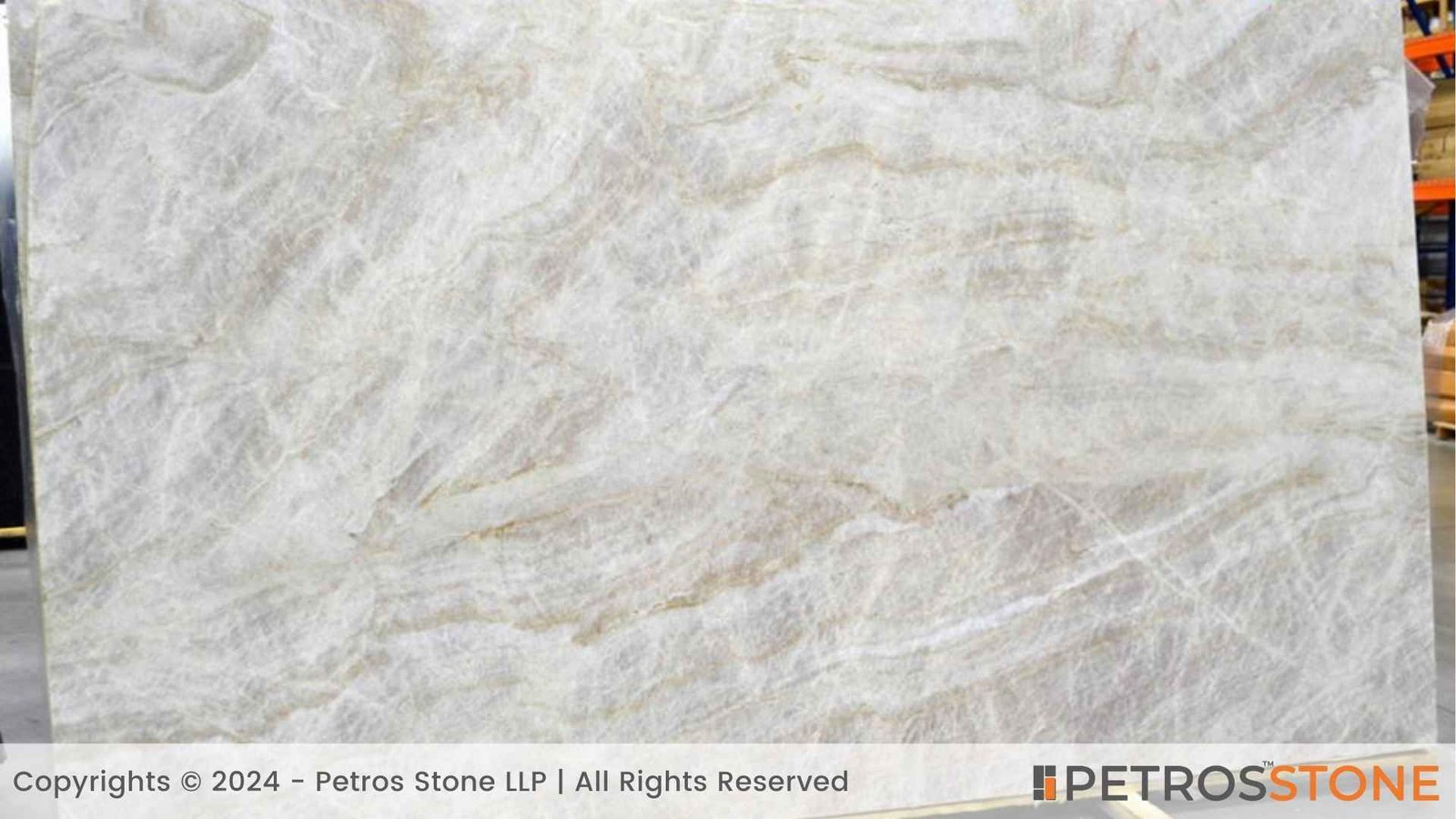
- Look: Creamy white base with soft golden or beige veining.
- Feel & features: Calm, bright, luxurious; pairs well with warm metals and light wood.
- Best use: Kitchens, living rooms, open spaces where you want some light and class.
White Fantasy Quartzite
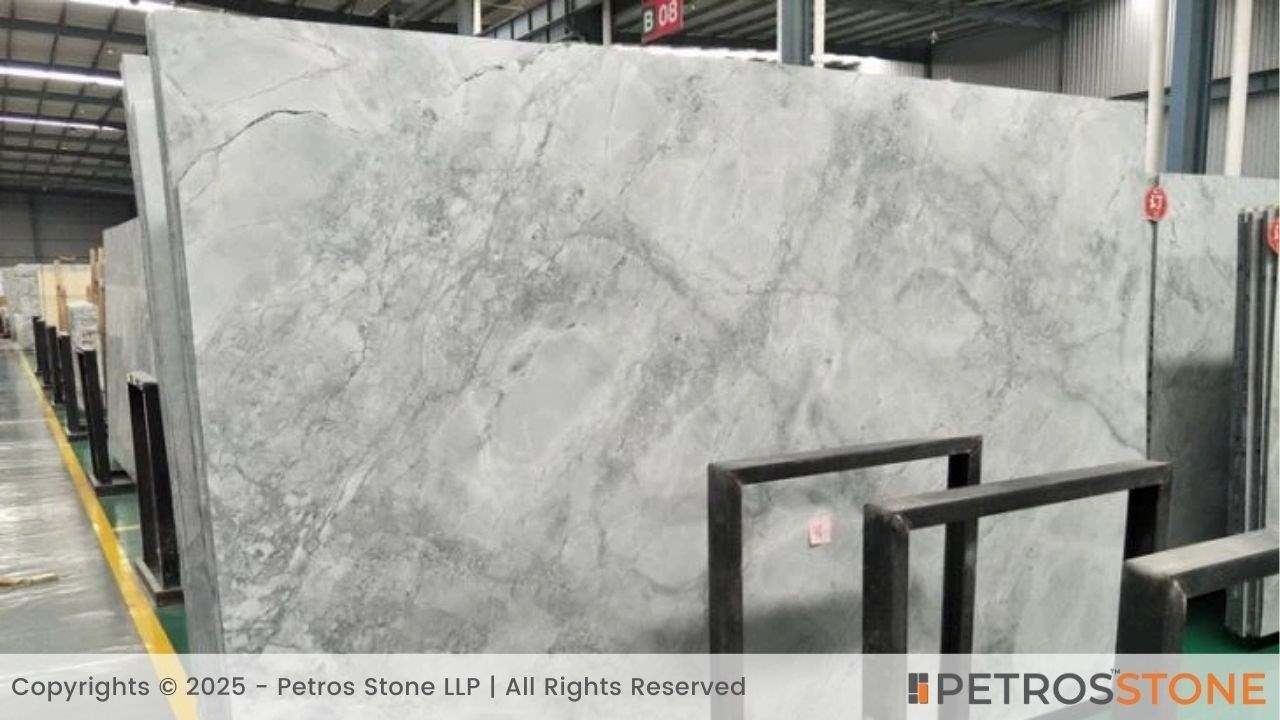
- Look: Clean white with gentle gray swirls.
- Feel & features: Light and open; helps to enlarge small rooms.
- Best use: Bathrooms, bedrooms, minimalist homes.
Leathered Quartzite
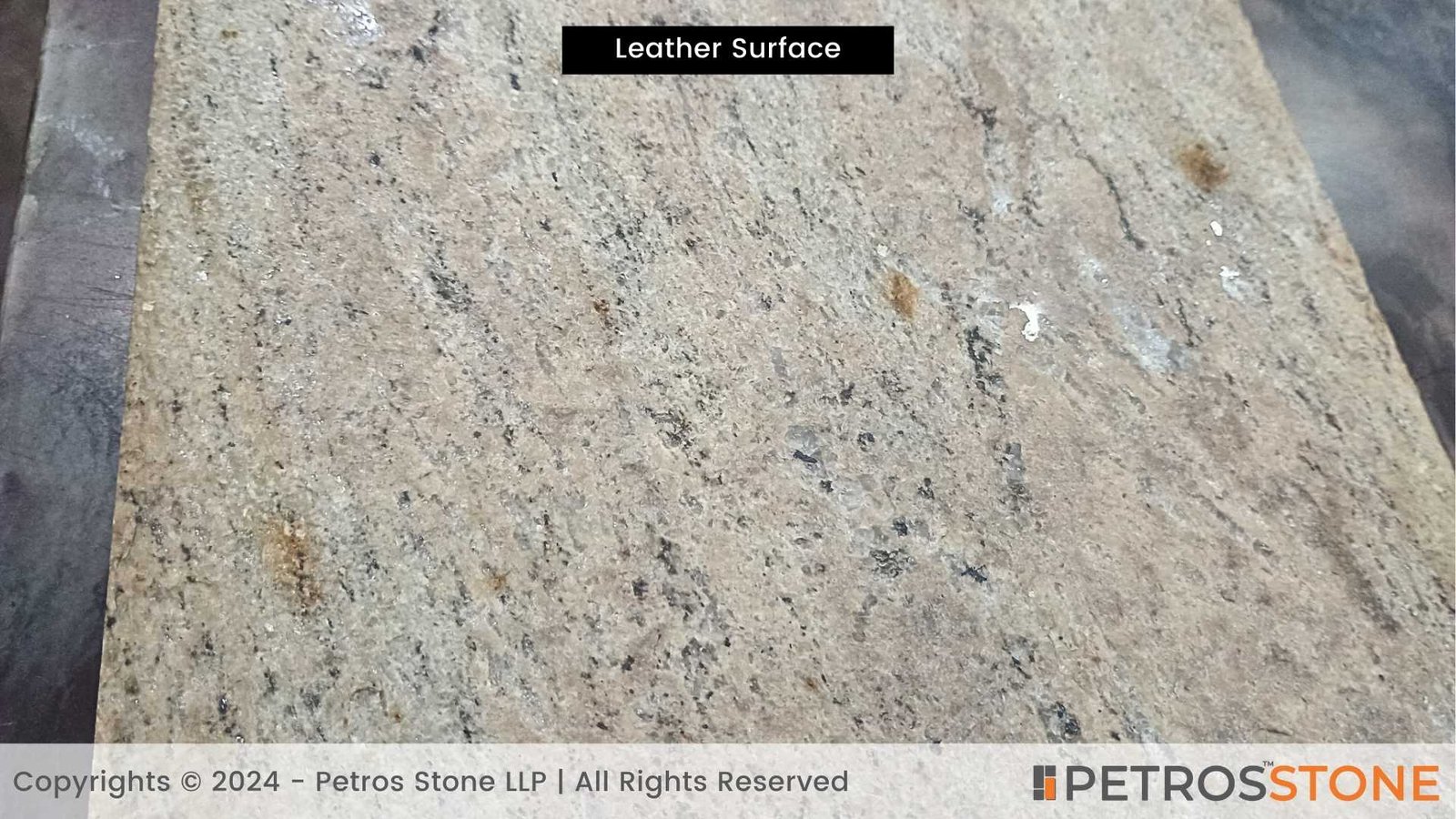
- Look: Matte, slightly textured, glare-reducing surface.
- Feel and features: Excellent grip; no fingerprints or smudges.
- Best use: Kitchens, mudrooms, outdoor patios..
- Note – Leathered quartzite (finish name used as label for darker quartzites)
Fantasy Brown

- Look: Flowing brown, cream, and white waves.
- Feel & features: Warm and dramatic; composition varies by quarry—test hardness.
- Best use: Small kitchens, living rooms that need warmth.
Patagonia Quartzite
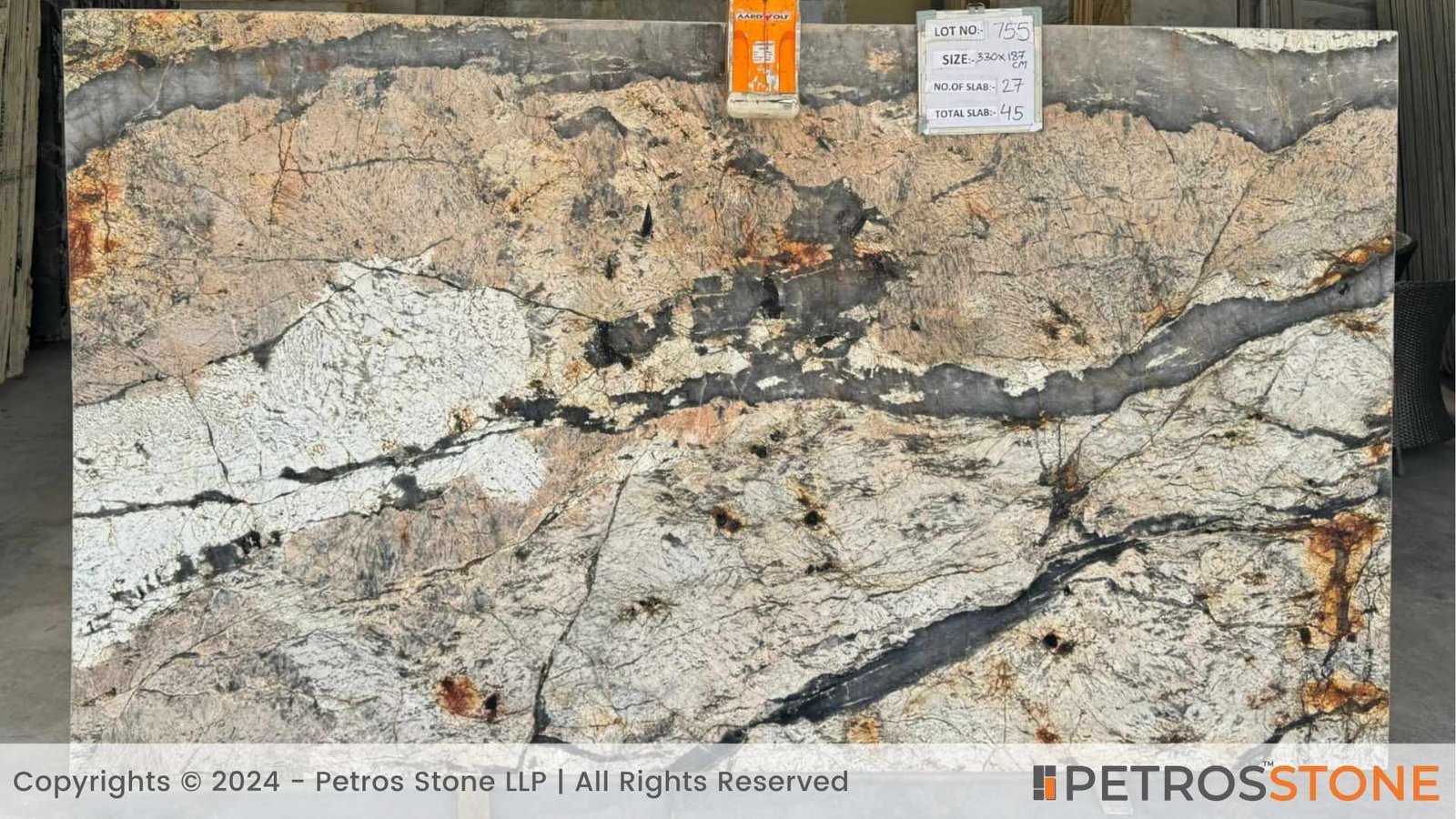
- Look: Bold mix of white, gold, black, and translucent quartz patches.
- Feel & features: Statement-making; each object is artistically like.
- Best use: Feature floors, entries, boutique spaces (use sparingly for impact).
Grey Quartzite
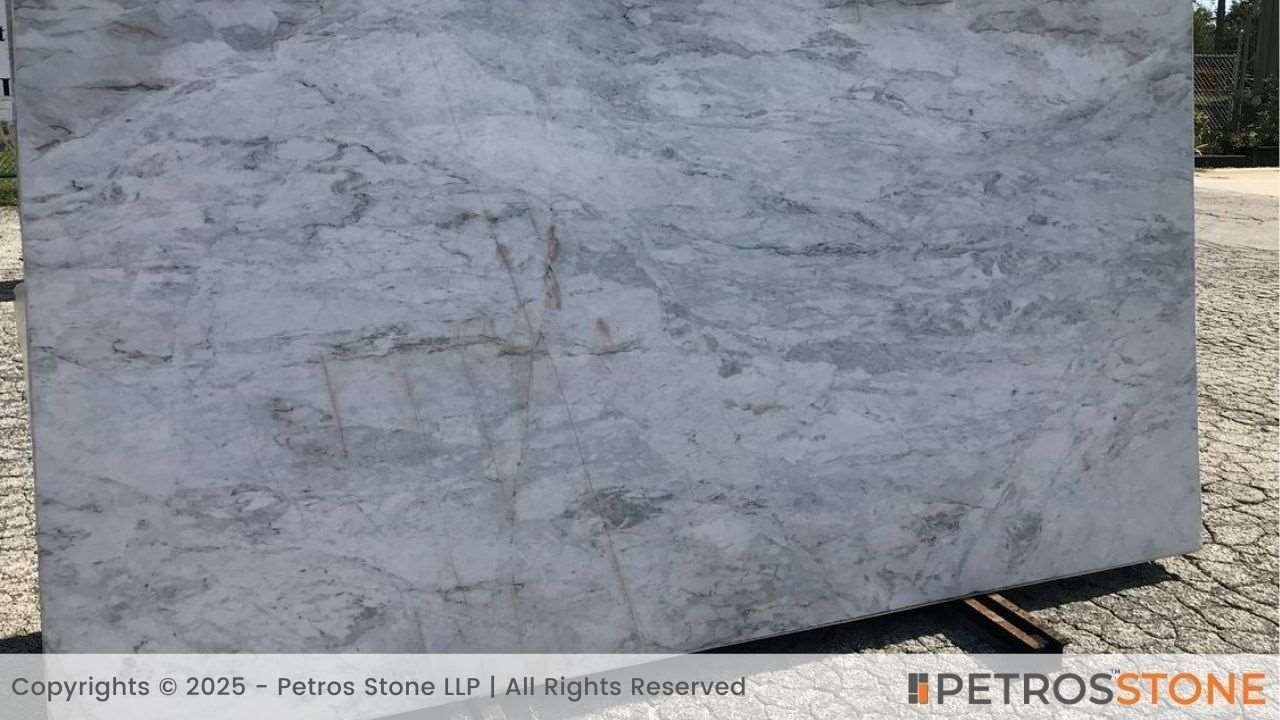
- Look: Uniform greys, light to medium charcoal.
- Feel & features: Minimalist, modern, sophisticated.
- Best use: Contemporary homes, offices, and commercial lobbies.
Calacatta Quartzite
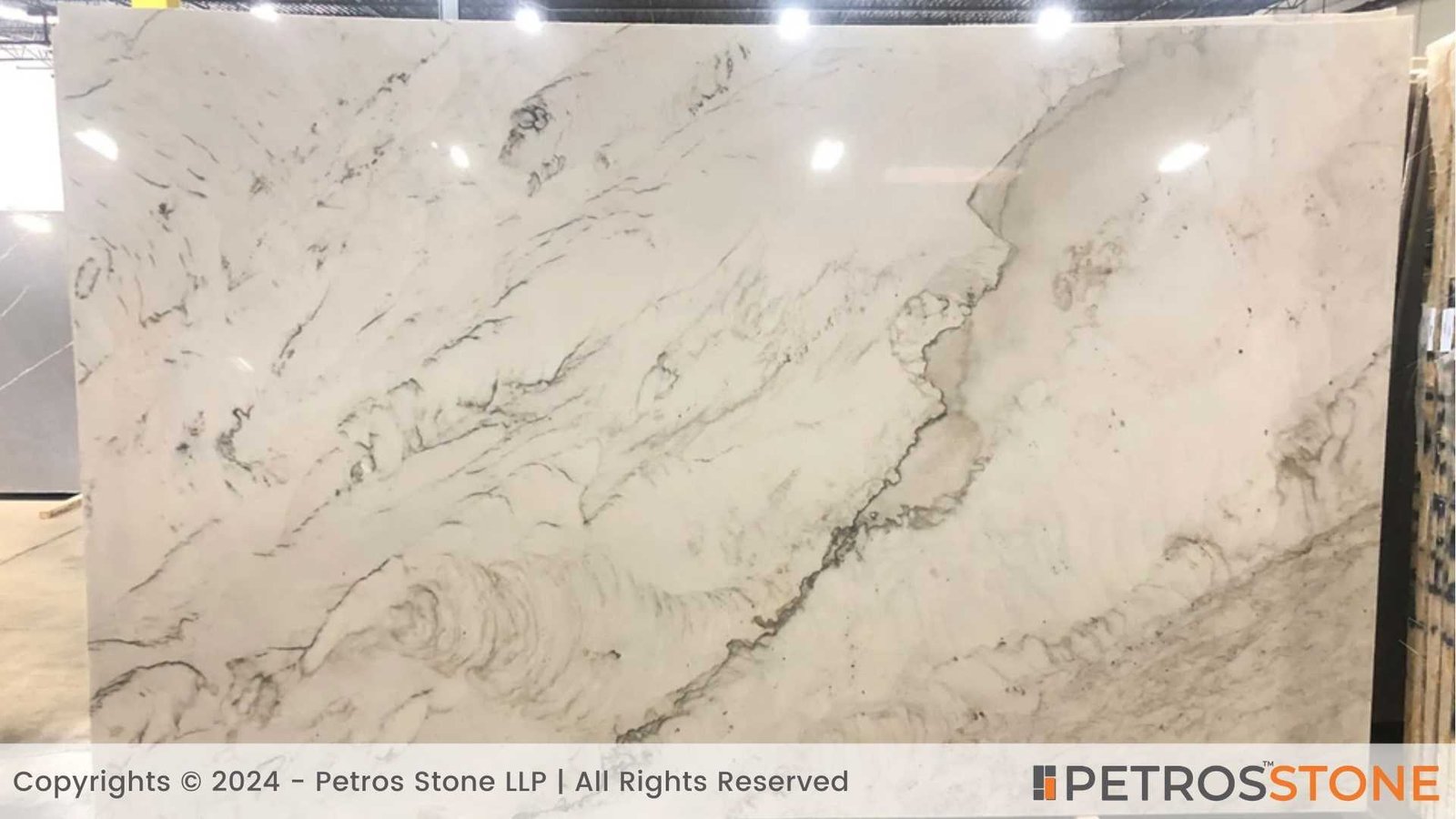
- Look: White fields, bright but with strong grey veins.
- Feel & features: A marble-like luxury without typical marble sensitivities.
- Best use: Luxury baths, formal living rooms, and show kitchens.
Arctic (Arktic/Artic) Quartzite
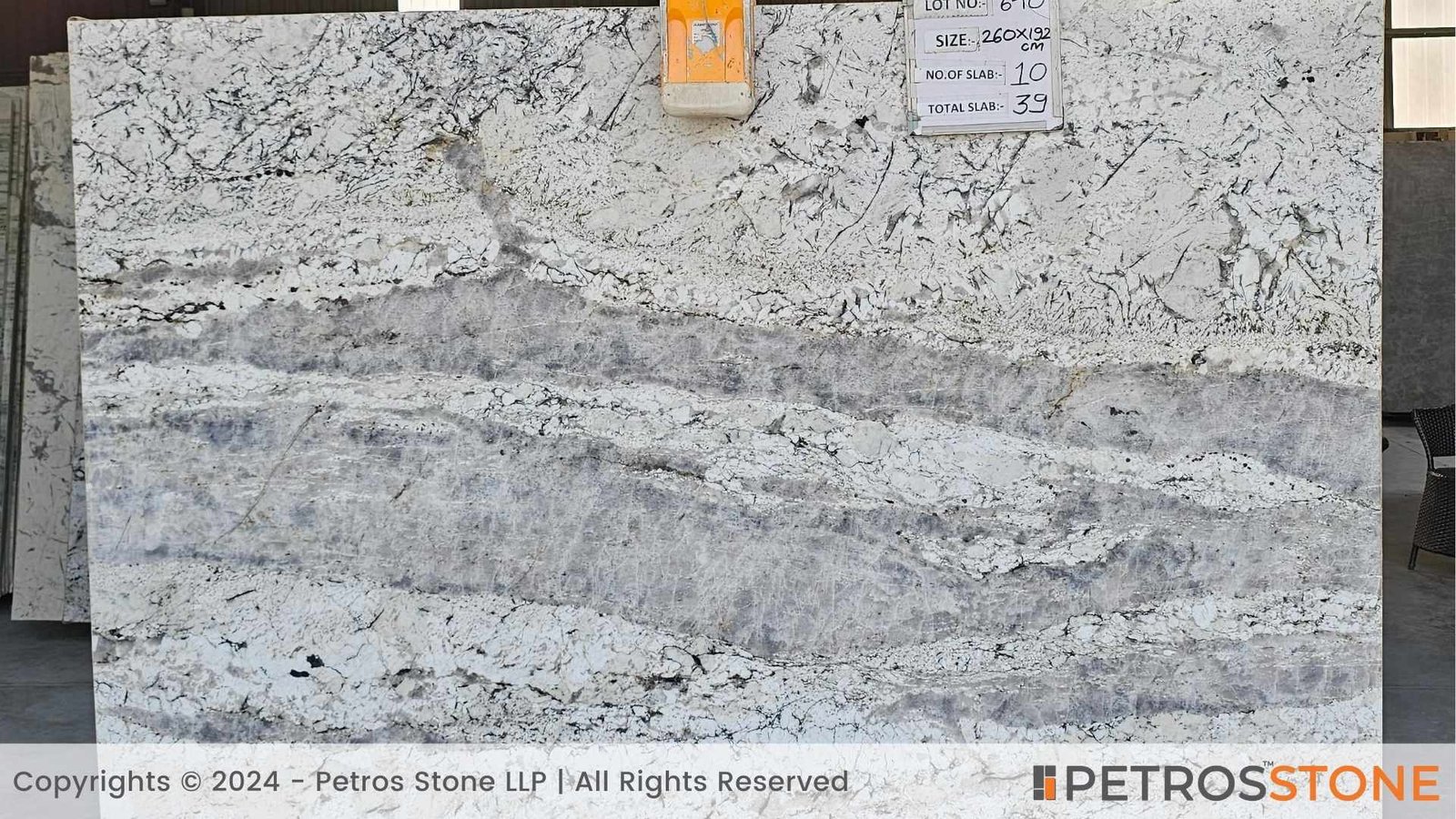
- Look: Cool white and blue-grey ribbons.
- Feel & features: Refreshing, crisp, coastal vibe.
- Best use: Beach houses, pool surrounds (textured finish outdoors).
Jade Quartzite
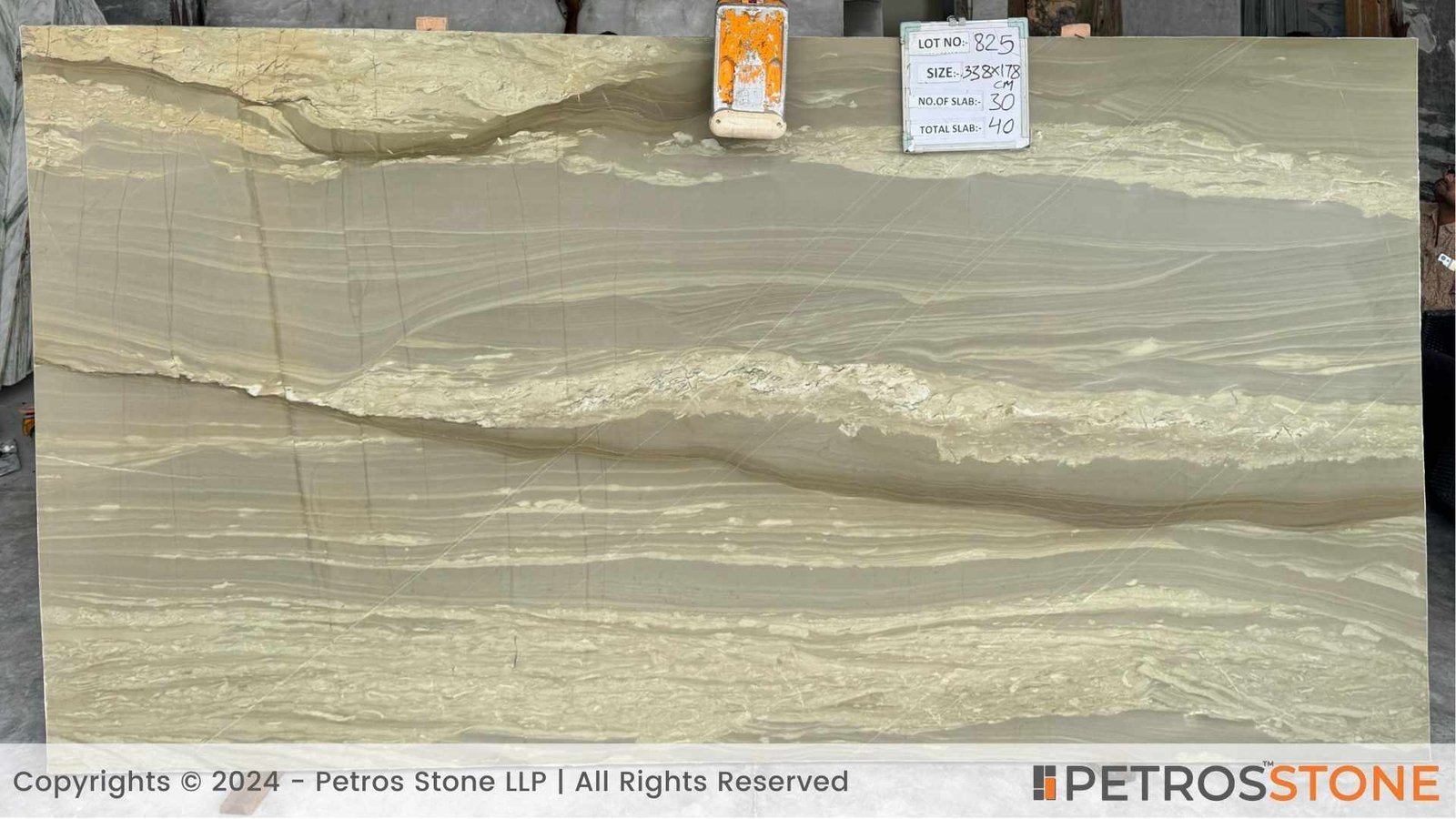
- Look: Light to deep green, occasionally with gold/brown touches.
- Feel & features: Spa-like calm, exotic character.
- Best use: Wellness spaces, feature areas, upscale interiors.
Star Black (or Nero) Quartzite
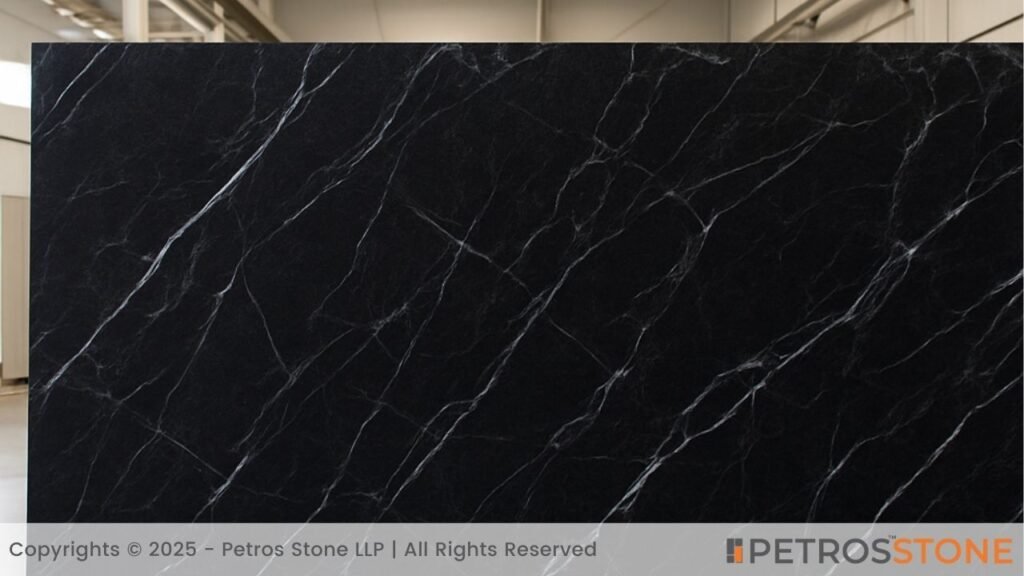
- Look: Deep black ground with subtle silver or white veins.
- Feel & features: Dramatic, high contrast, modern.
- Best use: Chic urban designs, moody lounges, retail floors.
Table – Quick Variety Snapshot
| Variety | Color family | Mood/Style | Notable tip |
| Taj Mahal | Warm white | Elegant, bright | Works with brass & oak |
| White Fantasy | Cool white/grey | Minimal, airy | Great in small rooms |
| Leathered (finish) | Depends on base stone | Tactile, practical | Hides traffic marks |
| Fantasy Brown | Warm brown/cream | Cozy, flowing | Verify it’s true quartzite |
| Patagonia | Mixed bold tones | Artistic, dramatic | Use as feature |
| Grey Quartzite | Neutral grey | Modern, clean | Excellent for offices |
| Calacatta Quartzite | White/grey | Luxe marble look | Pair with black accents |
| Arctic | White/blue-grey | Fresh, coastal | Ideal near windows |
| Jade | Greens | Spa, biophilic | Combine with natural wood |
| Star Black | Black/white veins | Bold, contemporary | Stunning with matte metals |
Best Surface Finishes for Quartzite Flooring
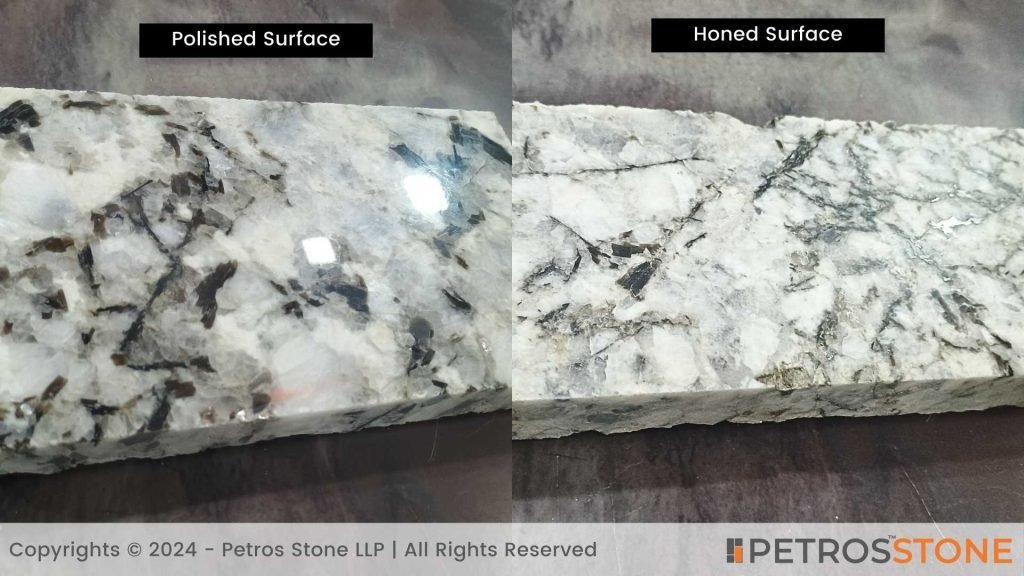
The finish options alter the appearance, feel, and security of your floor.
Polished Finish
- Appearance: Glossy, highly reflective.
- Pros: Classy, gives it depth and contrast, wiping is easy.
- Precaution: Slippery when wet.
- Best for: Formal living rooms, lobbies, and showrooms.
Honed Finish
- Appearance: Matte with a soft sheen.
- Pros: Less slippery, hides minor scratches, and has low glare.
- Best for: Bathrooms, kitchens, and busy family areas.
Leathered (Brushed) Finish
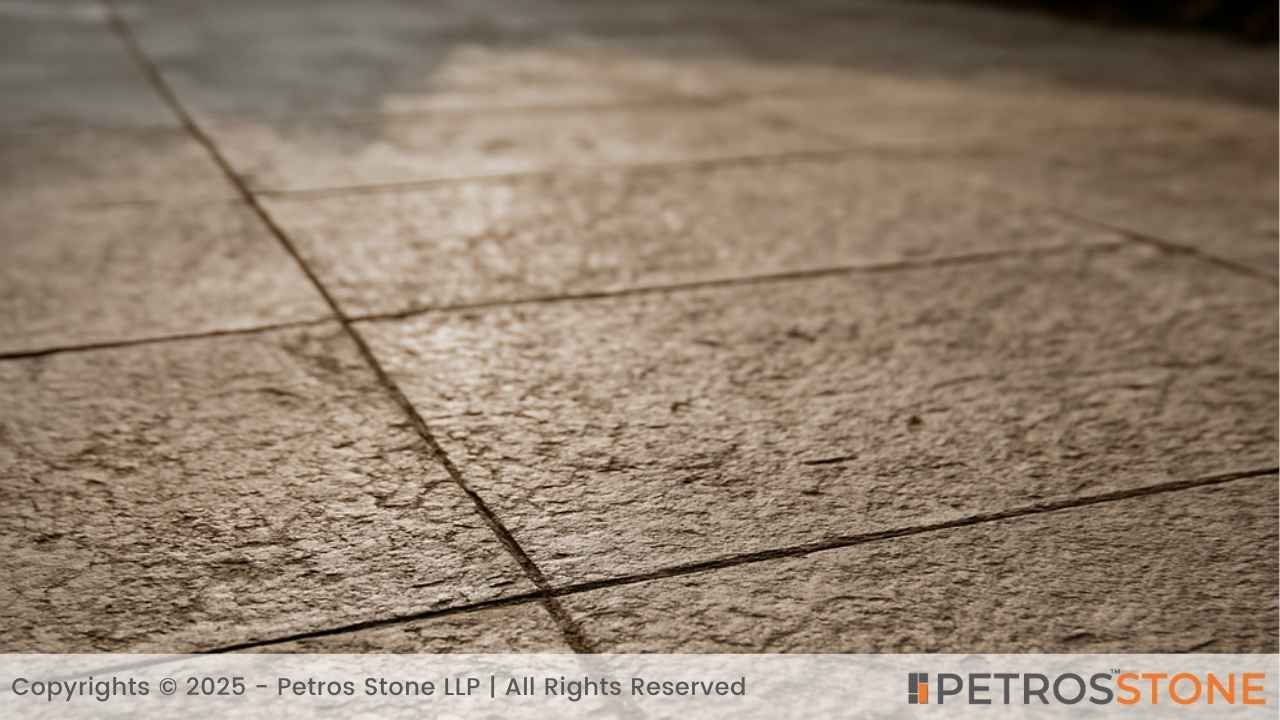
- Appearance: Textured, tactile, slightly rustic.
- Pros: Good retention; conceals fingerprints and watermarks.
- Best for: Kitchens, mud rooms, patios, and tractioned areas.
Finish Selection Guide
| Area/Use | Honed | Polished | Leathered | Brushed | Flamed |
| Living room | ✓ | ✓✓ | ✓ | ✓ | – |
| Kitchen | ✓✓ | – | ✓✓ | ✓ | – |
| Bathroom floor | ✓✓ | – | ✓ | ✓ | – |
| Entry/mudroom | ✓✓ | – | ✓✓ | ✓ | ✓✓ |
| Outdoor patio/pool | ✓ | – | ✓✓ | ✓✓ | ✓✓ |
| Commercial lobby | ✓ | ✓✓ | ✓ | ✓✓ | ✓ |
Note:
- ✓ = Suitable
- ✓✓ = Ideal choice
- – = Not advised
Expert Tips for Buying and Installing Quartzite Flooring
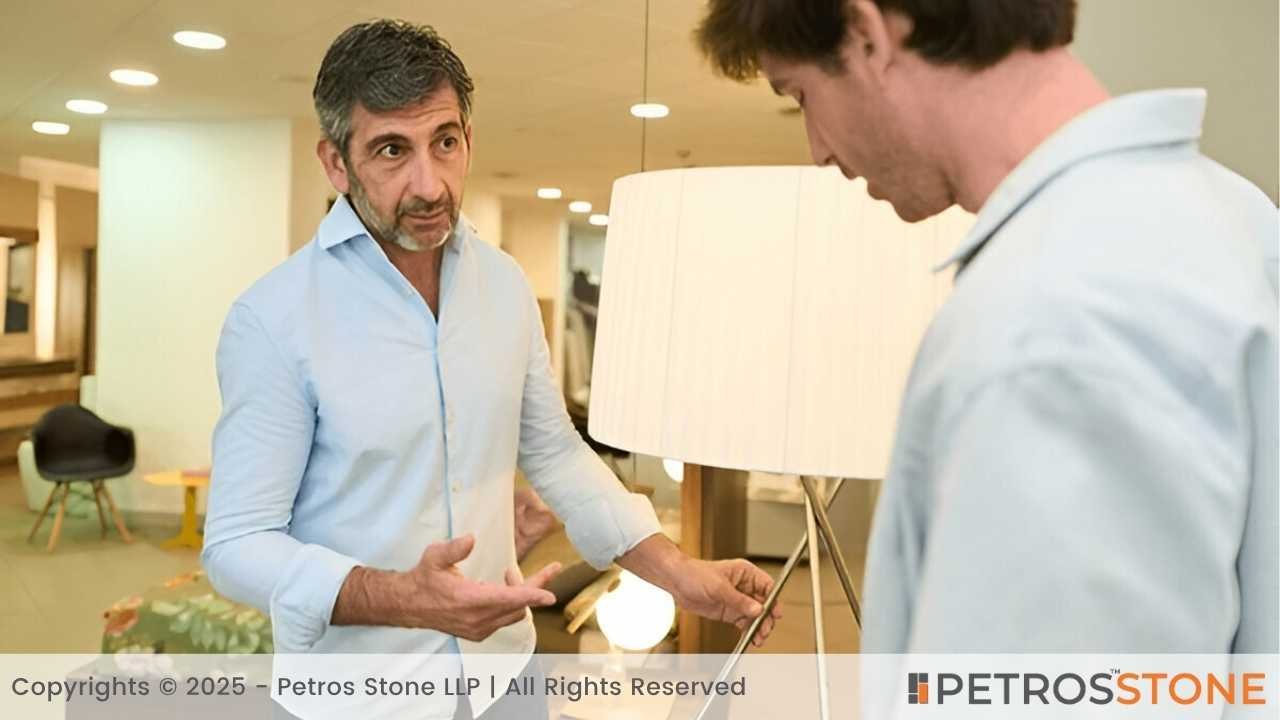
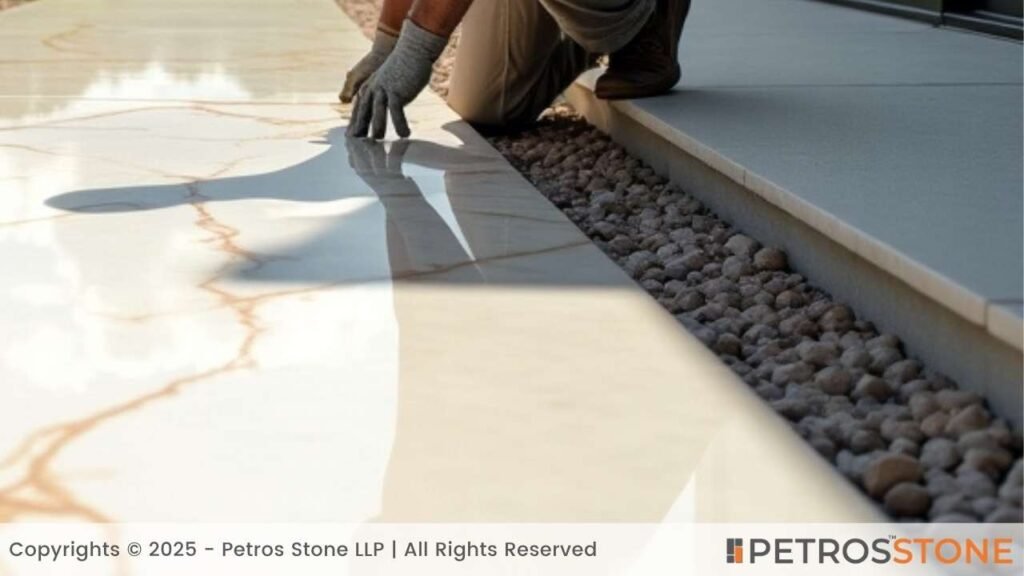
Before you buy
- Prefer full slabs, not small samples. Veining varies.
- Check identity: request hardness and simple acid tests to verify that it is quartzite.
- Function finish: honed/leathered in wet/traffic areas.
- Check thickness and size: thinner tiles/slabs lessen breakage; bigger formats are easier to look smooth, but they might need a flatter substrate.
- Enquire about bathroom and outdoor slip ratings.
Installer selection
- Select installers who are familiar with natural stone (not only ceramic).
- Inquire about substrate preparation, leveling, and cutting equipment (wet saw with diamond blades).
- Ask to have a clear layout plan with pattern direction and vein flow.
Subfloor & layout
- Make the subfloor flat and strong. Stone requires closer flatness tolerances than tile.
- Apply uncoupling membranes in situations where motion or small cracks present a danger.
- Plan movement joints for large areas and transitions.
Adhesives & grout
- Use premium thin-set or stone-rated adhesives.
- Select unsanded grout in small joints or epoxy grout for stain resistance (installer should be conversant with it).
Sealing
- Seal after installation and after the initial clean.
- Apply a penetrating breathable sealer that is compatible with quartzite.
- Test a small area to make sure you are not getting a color change that you do not want.
Post-install checks
- Pace the floor in various lights to locate lippage or hollow sounds.
- Ensure you have a care sheet and sealer brand to re-order in the future.
Table – Pre-Install Checklist (Quick Table)
| Step | What to confirm | Who’s responsible |
| Material identity | True quartzite (hardness/etch test) | Supplier/You |
| Finish choice | Safe & suitable for area | You/Designer |
| Subfloor flatness | Meets stone tolerances | Installer |
| Layout plan | Vein direction, cuts, transitions | Installer/You |
| Adhesive & grout | Stone-rated, correct joint widths | Installer |
| Sealing | Correct product, dry times observed | Installer/You |
| Maintenance plan | Re-seal schedule & cleaners | You |
Maintenance & Care Guide for Quartzite Flooring

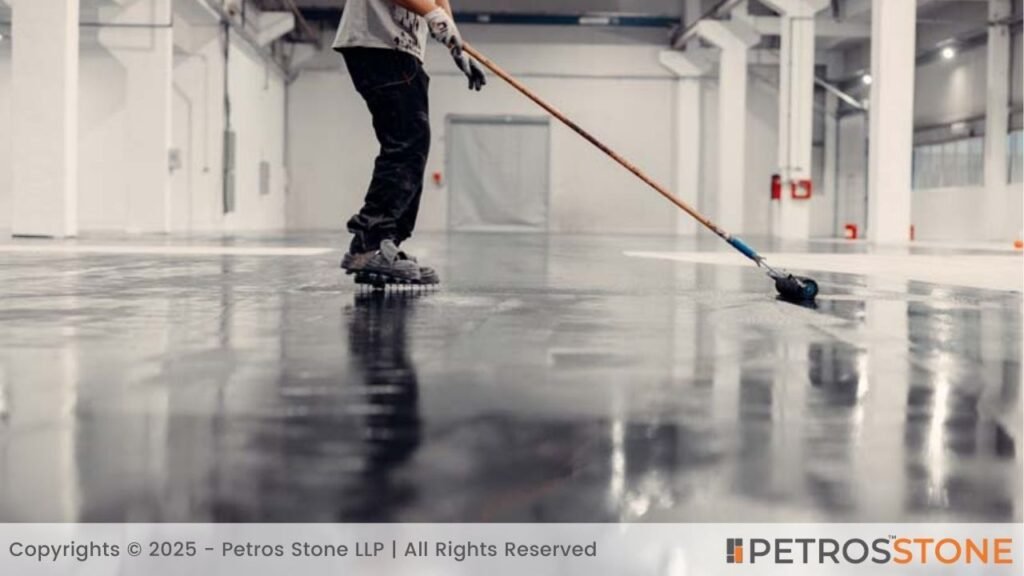
Daily/Weekly routine
- Clean grit on dry dust mop or vacuum with a soft brush.
- Damp mop with pH-neutral stone cleaner or mild soap; avoid bleach, vinegar, and citrus cleaners.
- Quick cleaning of spills, especially oils, wine, coffee, and coloured sauces..
Monthly/Quarterly
- Be sure to check busy places where the sealer may be peeling or dry
- Treat with stone-safe stain remover or poultice (as necessary).
Annually/Biannually
- Do a water drop test: when the water turns the stone dark in a short period of time, then it is time to re-seal.
- Re-seal using a penetrating sealer (clean, dry surface; recommended dwell time; wipe excess).
Protection Tips
- Pads under furniture; wear rugs at doorways to trap grit.
- Install non-rubber pads that do not discolour stone.
- In kitchens, put a mat close to the sink and stove.
Table – Maintenance Schedule Table
| Frequency | Task | Tools/Products |
| Daily–Weekly | Dry mop/vacuum; damp mop | Microfibre mop, pH-neutral cleaner |
| Monthly | Visual check for wear | Flashlight, clean cloth |
| As needed | Stain treatment | Stone poultice/stone stain remover |
| 12–24 months | Re-seal | Penetrating sealer, applicator pads |
Troubleshooting quick fixes:
- Grease stain: Apply a degreasing poultice; re-apply as necessary; re-seal.
- Water spots: Wipe off dry with soft cloth or scrape under sealer and strip and re-seal.
- Etch-like (infrequent on true quartzite): Check identity of stone; have repurposed with a stone pro.
Cost Analysis of Quartzite Flooring

The prices depend on the region, type, and depth, as well as the intricacy of your project. Budget material and labor, and add wastage (5-12% more so when you have to match veining).
Table – Typical Cost Ranges (per sq. ft.)
| Category | Low | Mid | High |
| Material (standard quartzite) | $9 | $15 | $25 |
| Installation labor | $12 | $18–$25 | $30+ |
| Substrate prep/leveling | $1 | $2–$4 | $6+ |
| Sealing (initial) | $0.50 | $1 | $1.50 |
| Annual reseal (DIY/pro) | $0.30 | $0.75–$1.25 | $1.50 |
Example Budget (Mid-range scenario)
- Area: 400 sq. ft. living + kitchen.
- Material: $15/sq. ft. → $6,000
- Wastage (8%): 32 sq. ft. → $480
- Labor: $3/sq ft → $1,200
- Prep & sundries: $2/sq ft → $800
- Sealing (initial): $1/sq ft → $400
Estimated total: $8, 880 (plus taxes/shipping, if applicable)
Ways to manage cost:
- Apply quartzite in major spaces (entry, living) and combine it with porcelain in other places.
- Use readily available kinds and typical sizes to minimize waste.
- Have simple layouts; less complicated cuts = less labor time.
Table – Quartzite vs Quartzite-Look (Lifecycle Snapshot)
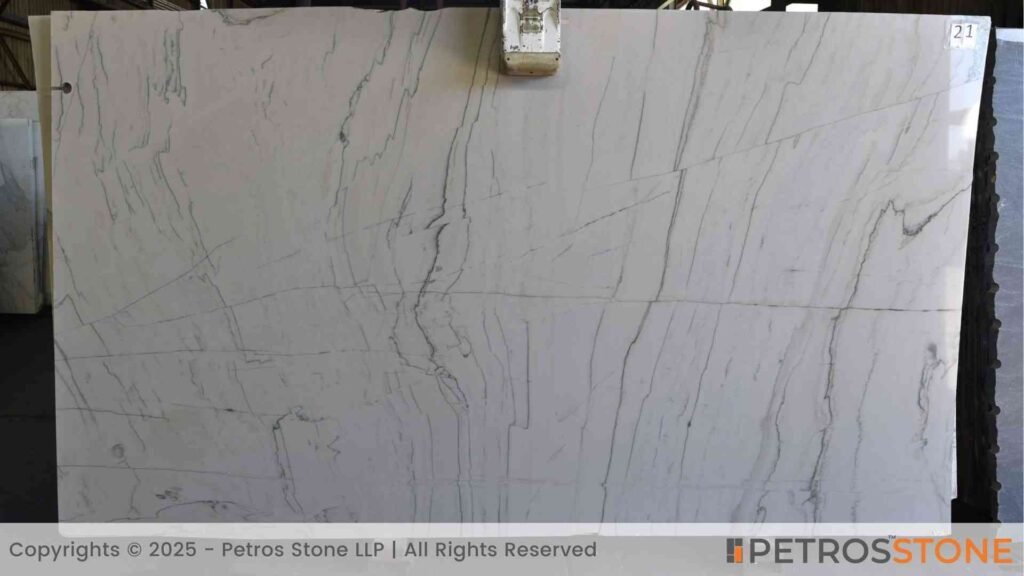
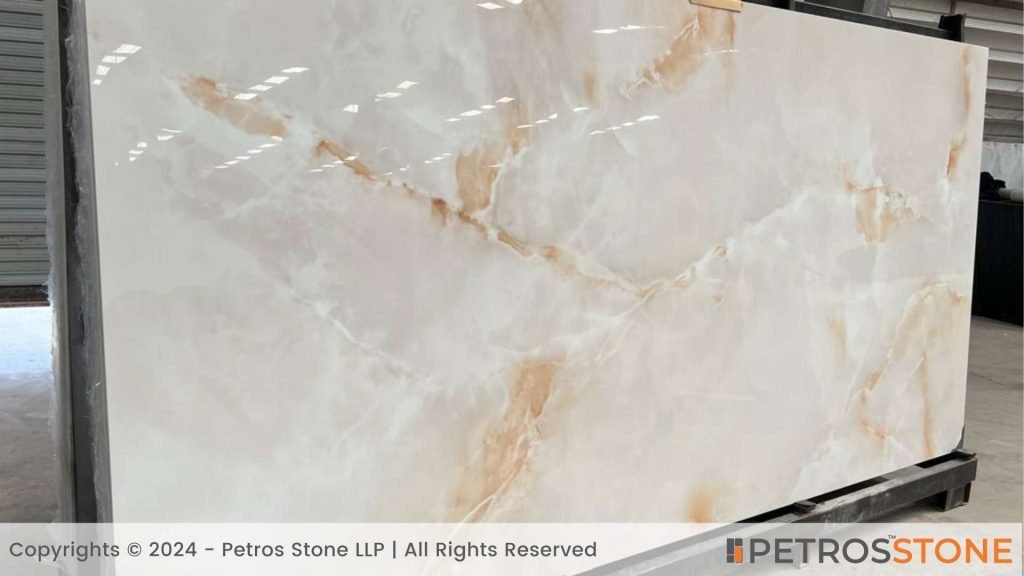
| Item | Quartzite (400 sq. ft.) | Quartzite-look Porcelain (400 sq. ft.) |
| Material cost | ~$6,000 | ~$360 –$600 |
| Labor | ~$2,000 | ~$200–$250 |
| Sealing (10 yrs) | ~$1,000–$2,000 | $0 |
| Expected life | 30–50+ years | 15–25 years |
| Resale signal | High (premium stone) | Moderate (practical) |
Expert’s Final Review & Verdict
Who should choose quartzite?
- Homeowners desiring the natural stone of great strength.
- Individuals who admire the beauty of marble but do not desire to be bothered with etching on a daily basis.
- Projects with long life and high resale objectives.
- Homes in warm climates(cool underfoot) or with radiant heating in cooler places.
When to think twice?
- Very tight budgets.
- Areas in which polished floors will be wet and slippery (use honed/leathered instead, or use porcelain).
- The projects that have limited access to skilled stone installers.
Verdict
Quartzite flooring is an excellent premium choice. It offers a classic appearance, holds on to everyday life, and creates value. It is more expensive and requires sealing, but with the appropriate finish and proper care, it will benefit you with decades of beauty and performance.
FAQs
Q1. Which is harder, granite or quartzite?
Yes. Quartzite is less porous than granite, more scratch-resistant, and is thus best suited for high-traffic flooring.
Q2. Does quartzite need sealing?
Yes. Quartzite is porous and needs to be covered every 12 to 24 months to resist stains and moisture, in spite of the fact that it is harder than marble.
Q3. What is the best quartzite floor in the kitchen?
Taj Mahal Quartzite and Fantasy Brown Quartzite are in demand since they are neither too pretty nor too durable.
Q4. Can quartzite be used outdoors?
Yes. Quartzite is resistant to weather and UV, and it is also good for patios and pool decks. Choose textured or honed finishes for better grip outdoors.
Q5. What to do to distinguish between quartzite and marble?
Quartzite is harder. Marble can be scratched with a knife, whereas quartzite will not scratch. Quartzite is also more resistant to acidic spillage than marble.
Q6. Is quartzite eco-friendly?
Yes. Quartzite is a natural stone and thus durable, and does not have to undergo a lot of processing, which makes it more environmentally friendly than synthetic flooring.
Q7. What is the difference between quartz and quartzite?
Quartz is a manufactured stone that is composed of resin and pigment, and quartzite is a natural stone made of sandstone. Quartz is more homogeneous, while quartzite possesses distinctive natural designs.
Summary
In conclusion, understanding the pros and cons of quartzite flooring helps you decide if it’s the right premium surface for your home. From superior hardness to natural beauty, quartzite delivers durability with timeless appeal, especially when installed with care and sealed properly
Relax with a reliable supplier and an expert installer, seal on schedule, and have a surface that will continue to impress over the years. Quartzite is difficult to rival in terms of natural appearance, so quartzite-look porcelain is a clever substitute on the budget-friendly or ultra-low maintenance front.
Key Takeaways
- Quartzite offers the elegance of marble with the durability of granite, making it ideal for both residential and commercial flooring.
- It’s highly resistant to heat, scratches, and UV rays, making it suitable for kitchens, bathrooms, sunrooms, and outdoor patios.
- Regular sealing is required, but maintenance is easier than with marble, and its longevity makes it a worthwhile investment.
- Available in stunning natural patterns and textures, quartzite complements modern, rustic, and luxury interiors alike.
- Though costly and requiring skilled installation, quartzite flooring adds long-term value and timeless visual appeal to your property.
Feel free to get in touch for a free consultation, quote, and get a detailed understanding from our experts here at Petros®. Visit https://petrosstone.com/ or call +91-8446360361 and WhatsApp

Hello!
I’m Dr Mridali, a content writer with a background in dentistry and a passion for turning complex topics into clear, engaging stories. From healthcare to architecture, I create blogs that inform, educate, and connect with readers. With every piece, I aim to blend accuracy with creativity to make information truly valuable.
Brown Granite
White Galaxy Granite
Blue Bahia Granite
Silver Cloud Granite
Black Pearl Granite
Dallas White Granite

